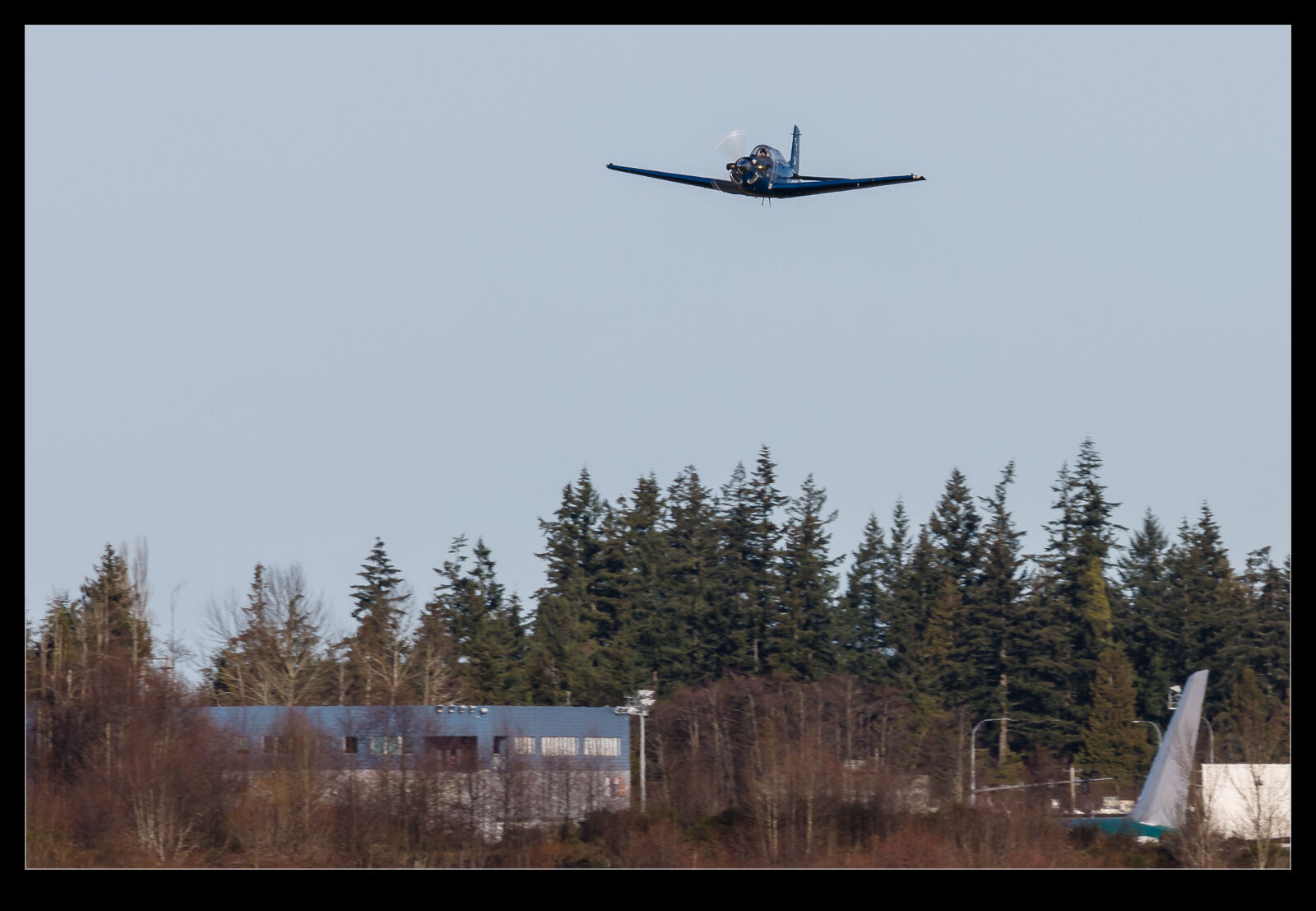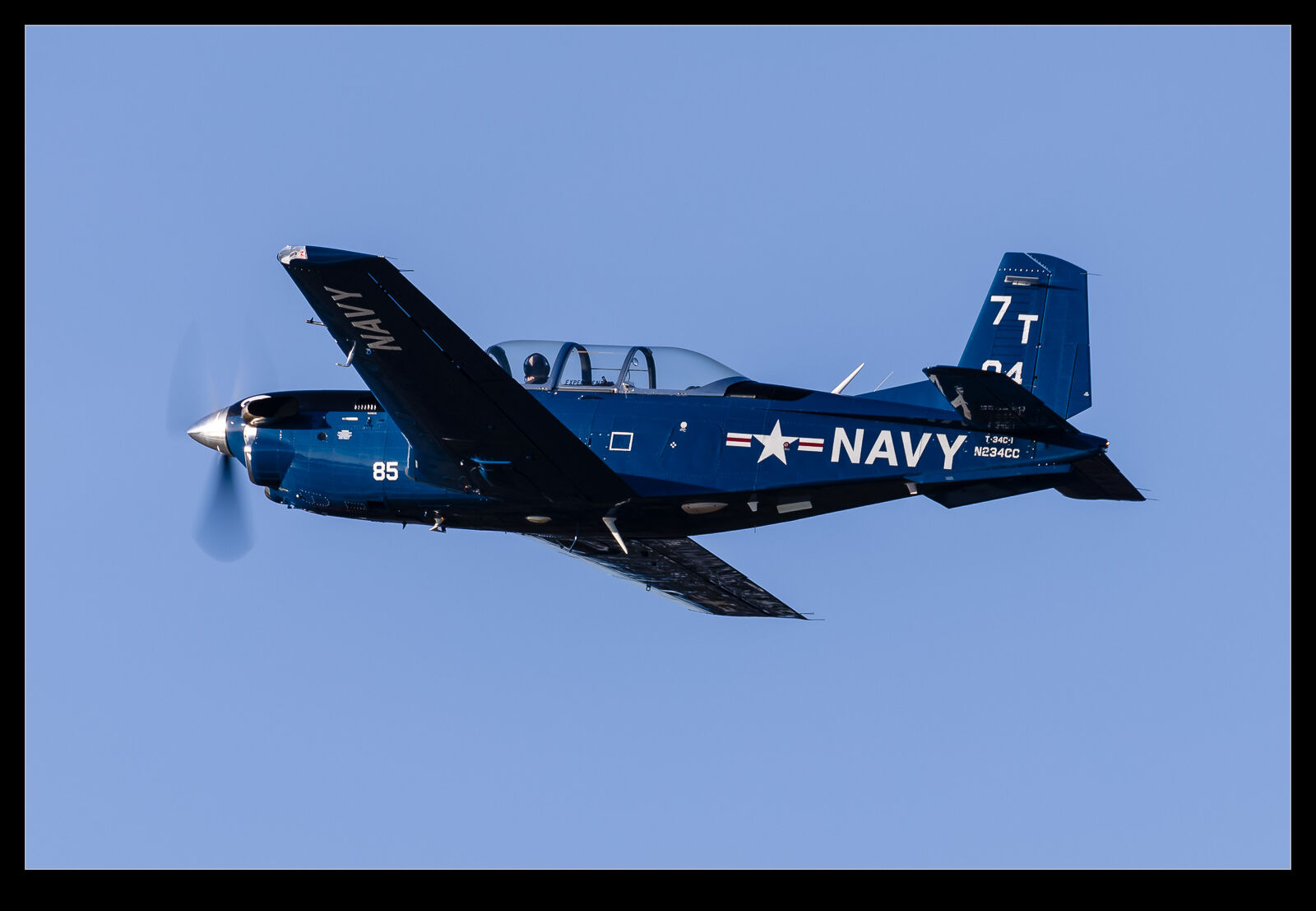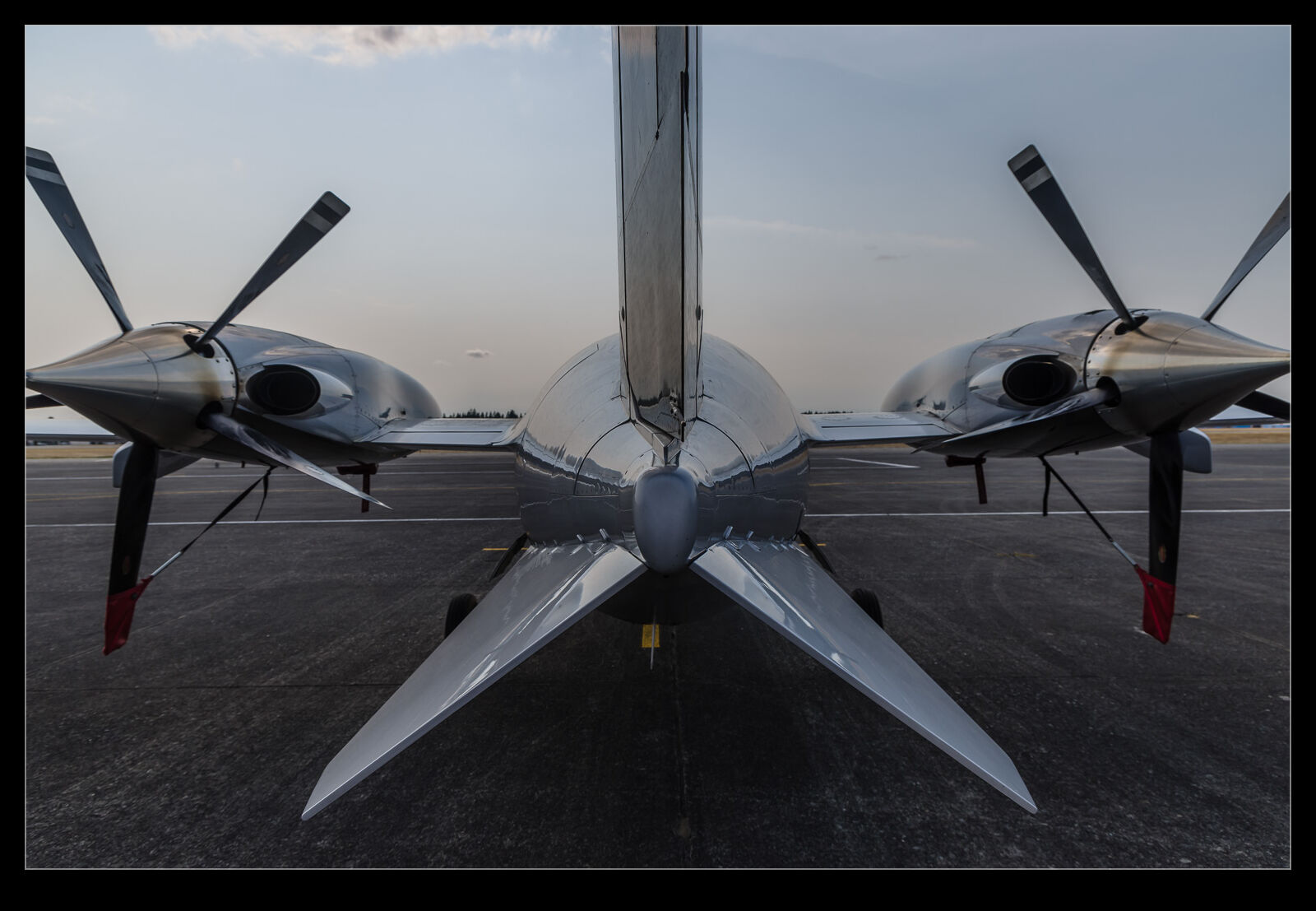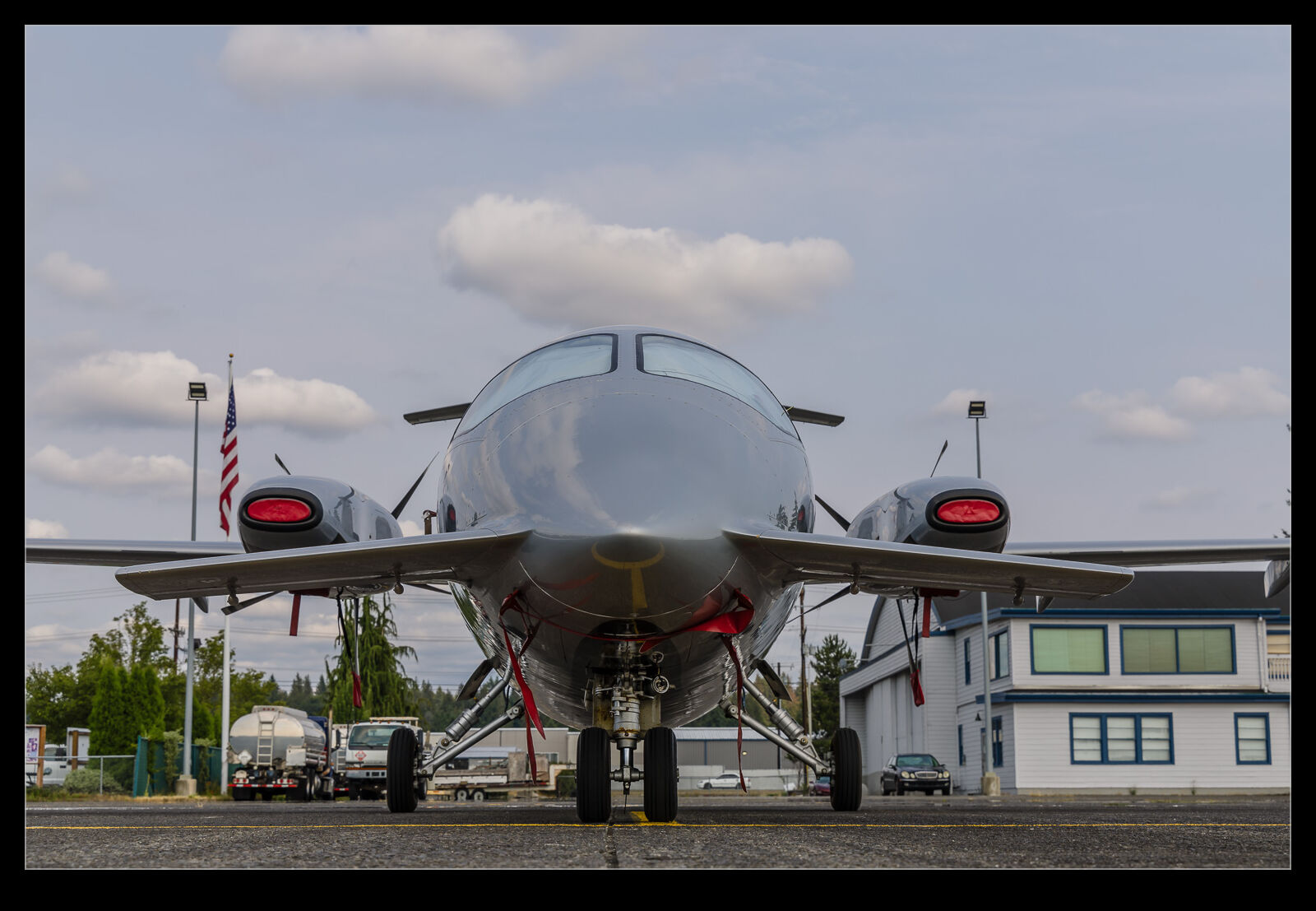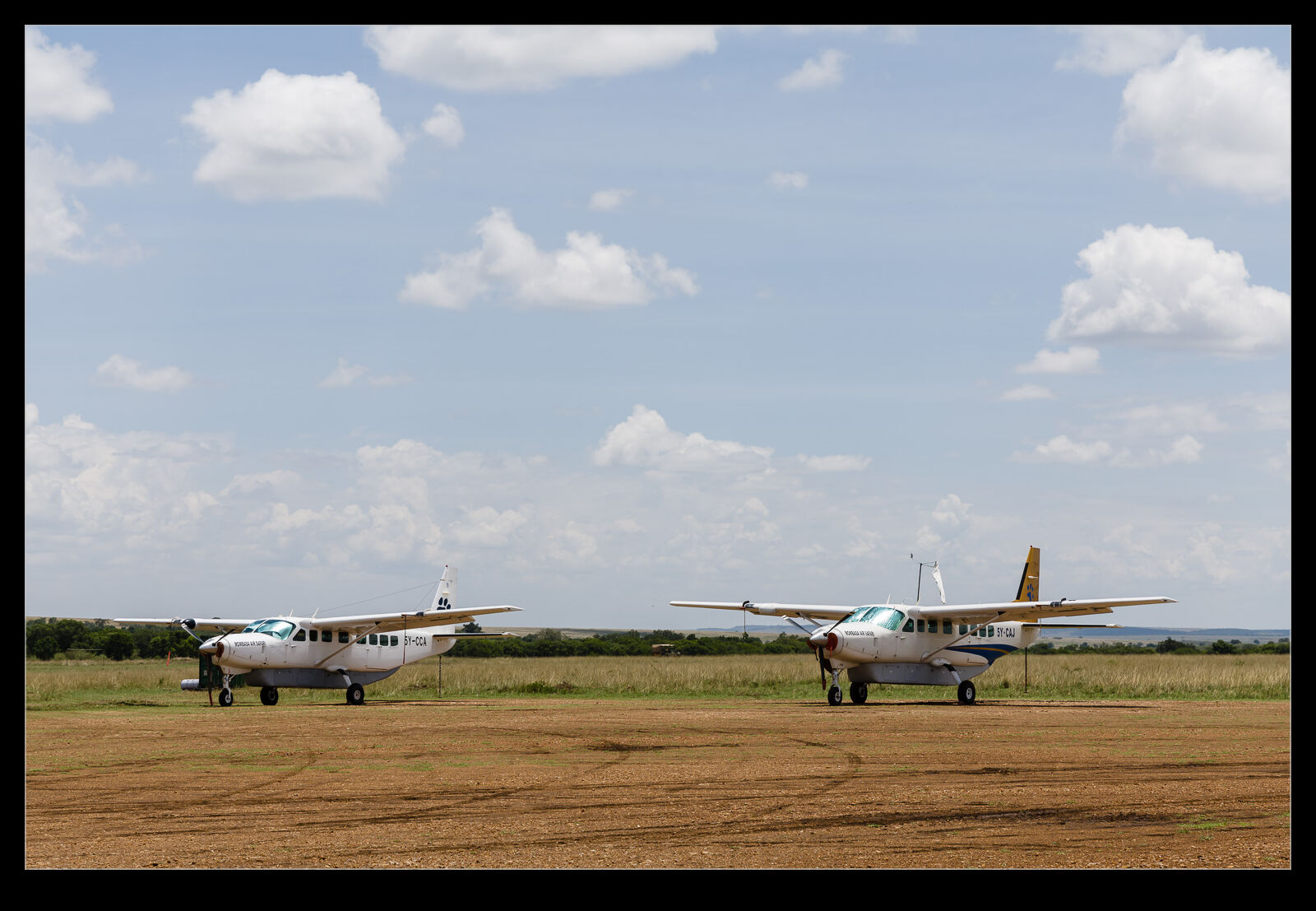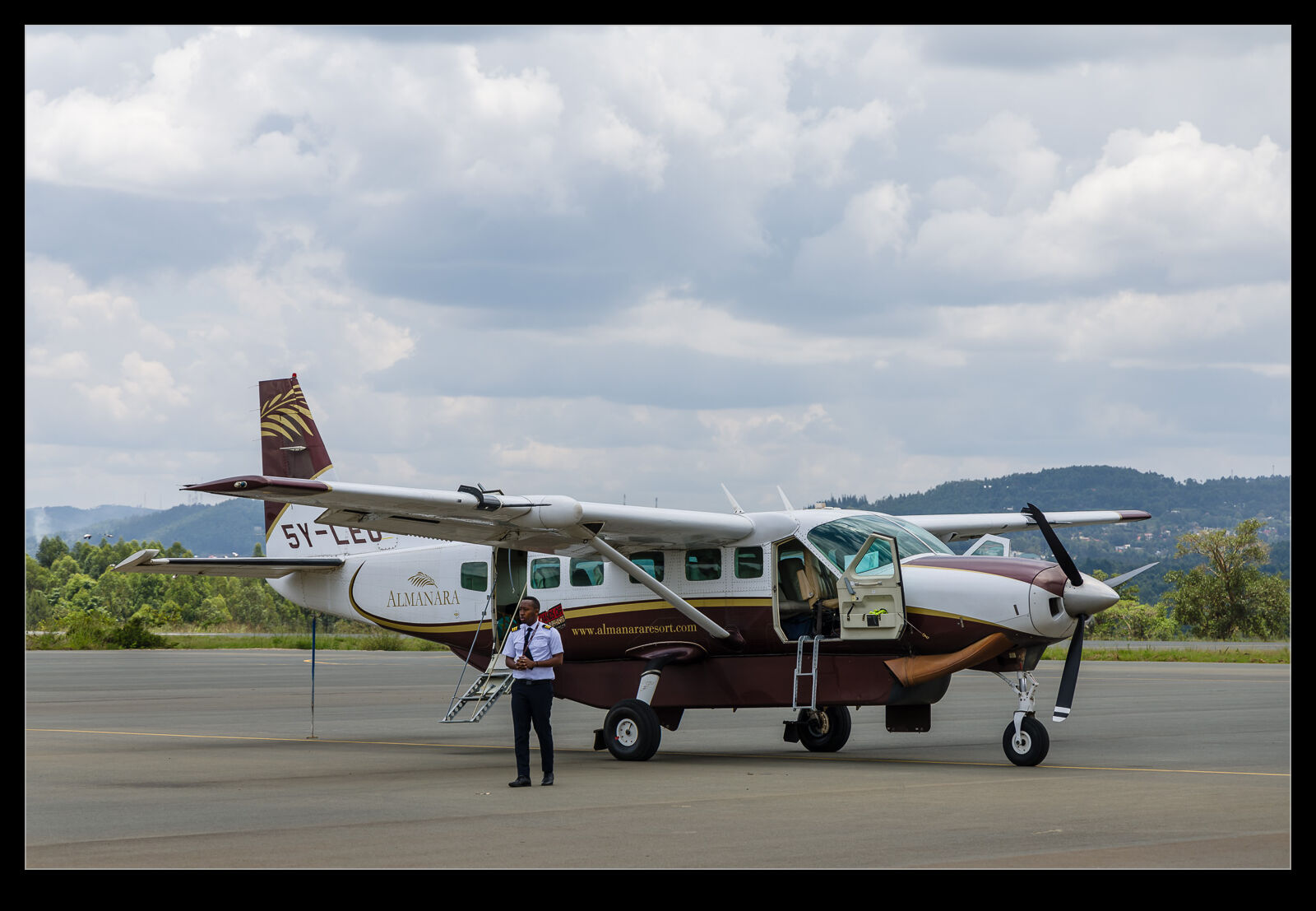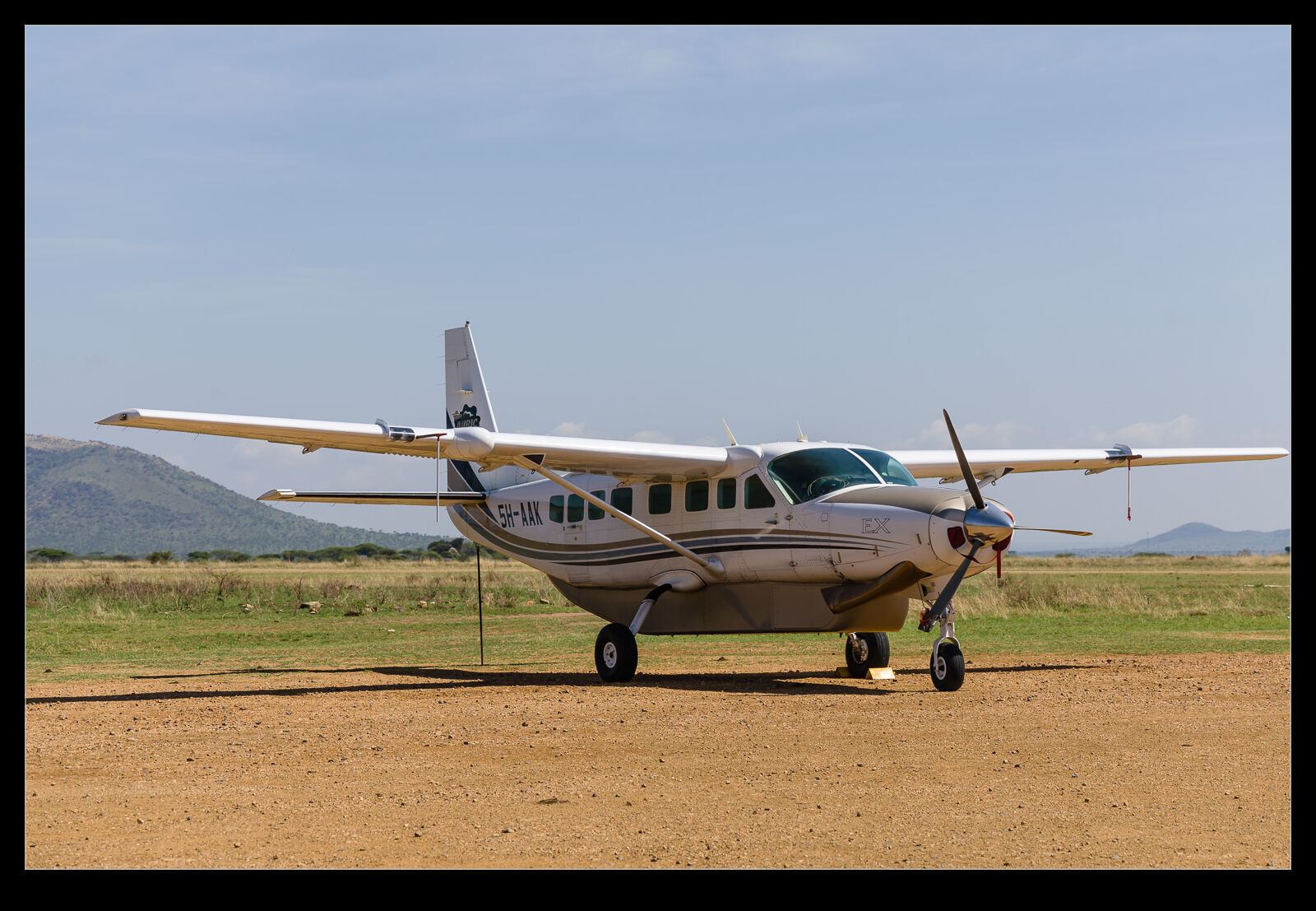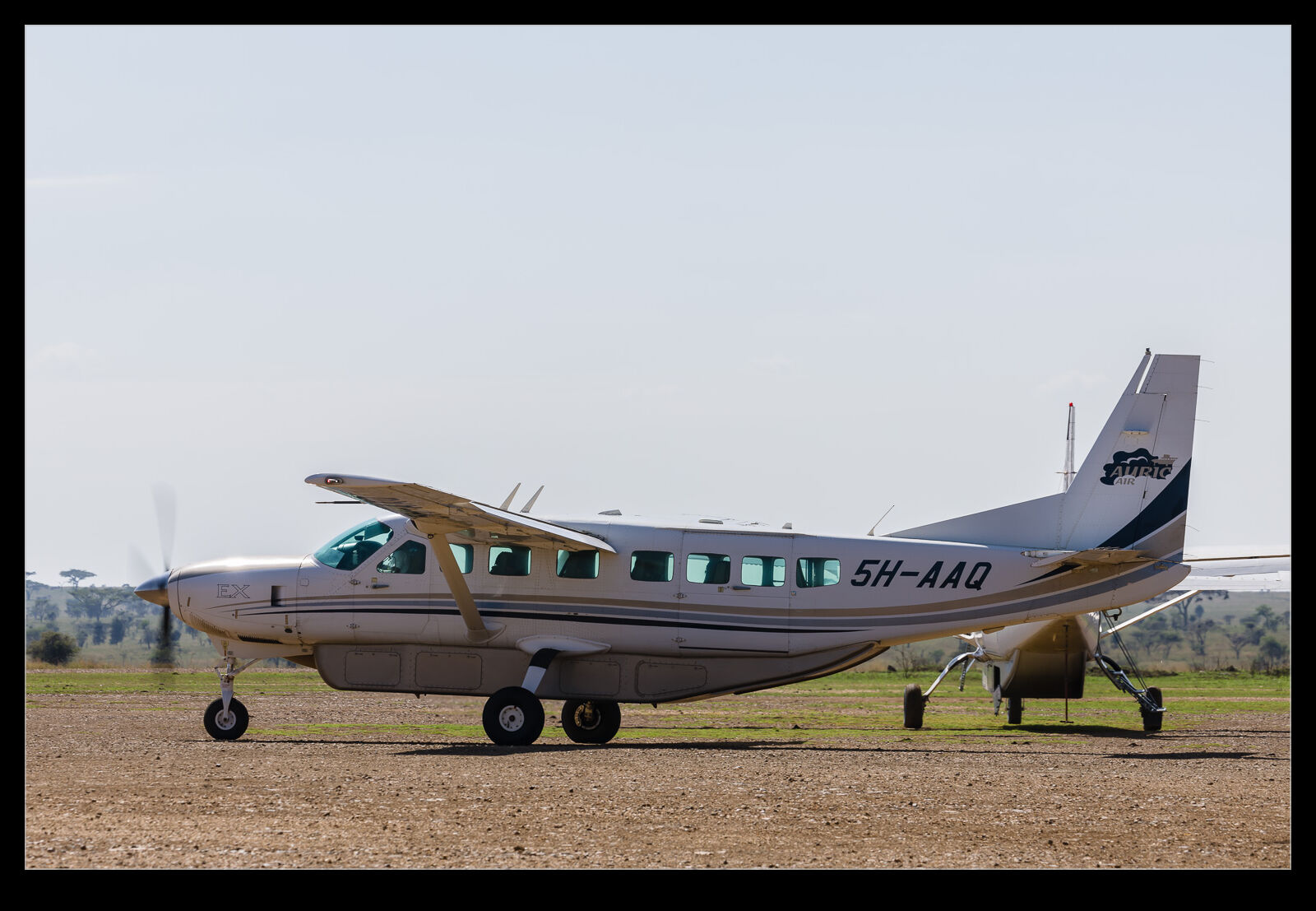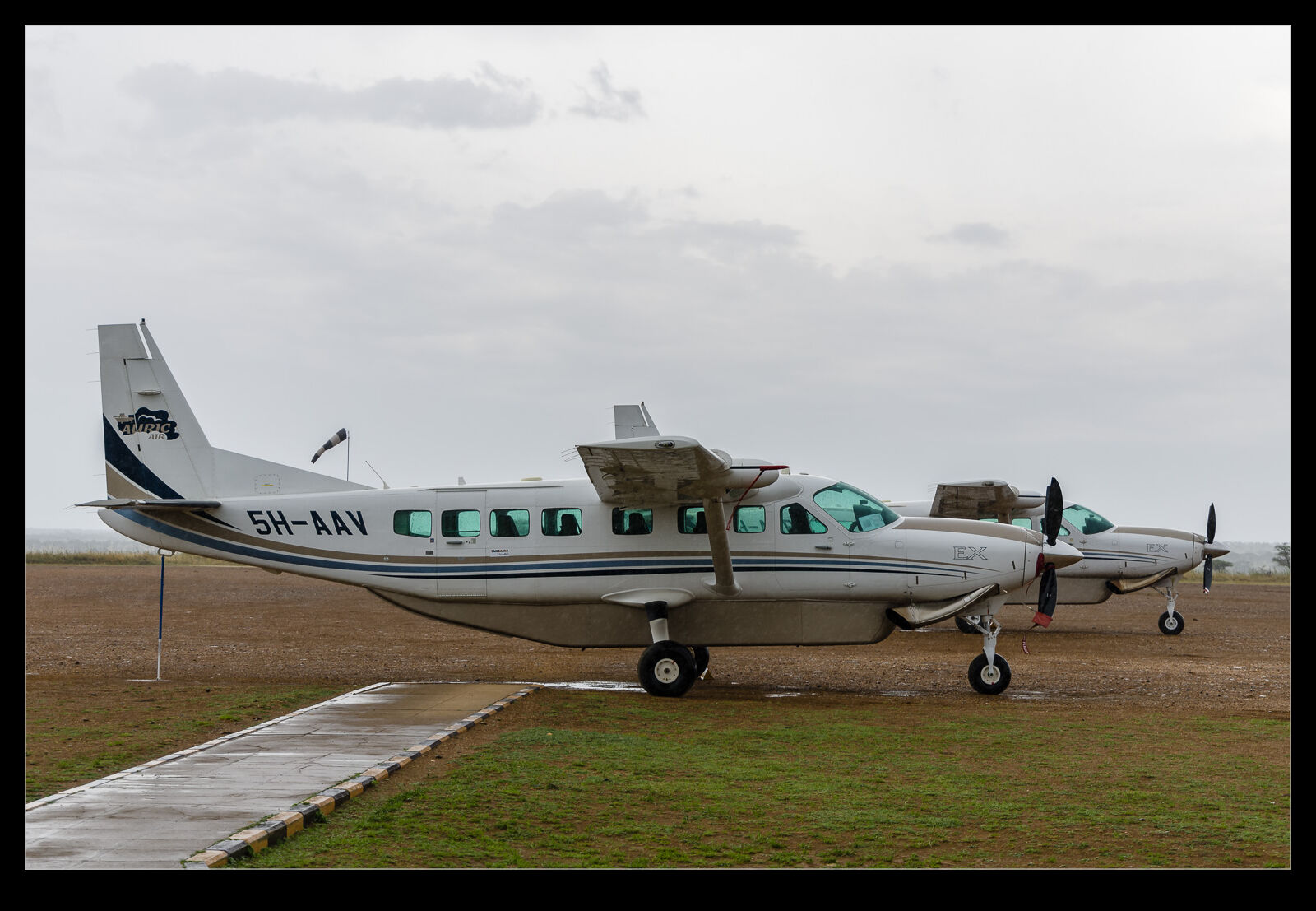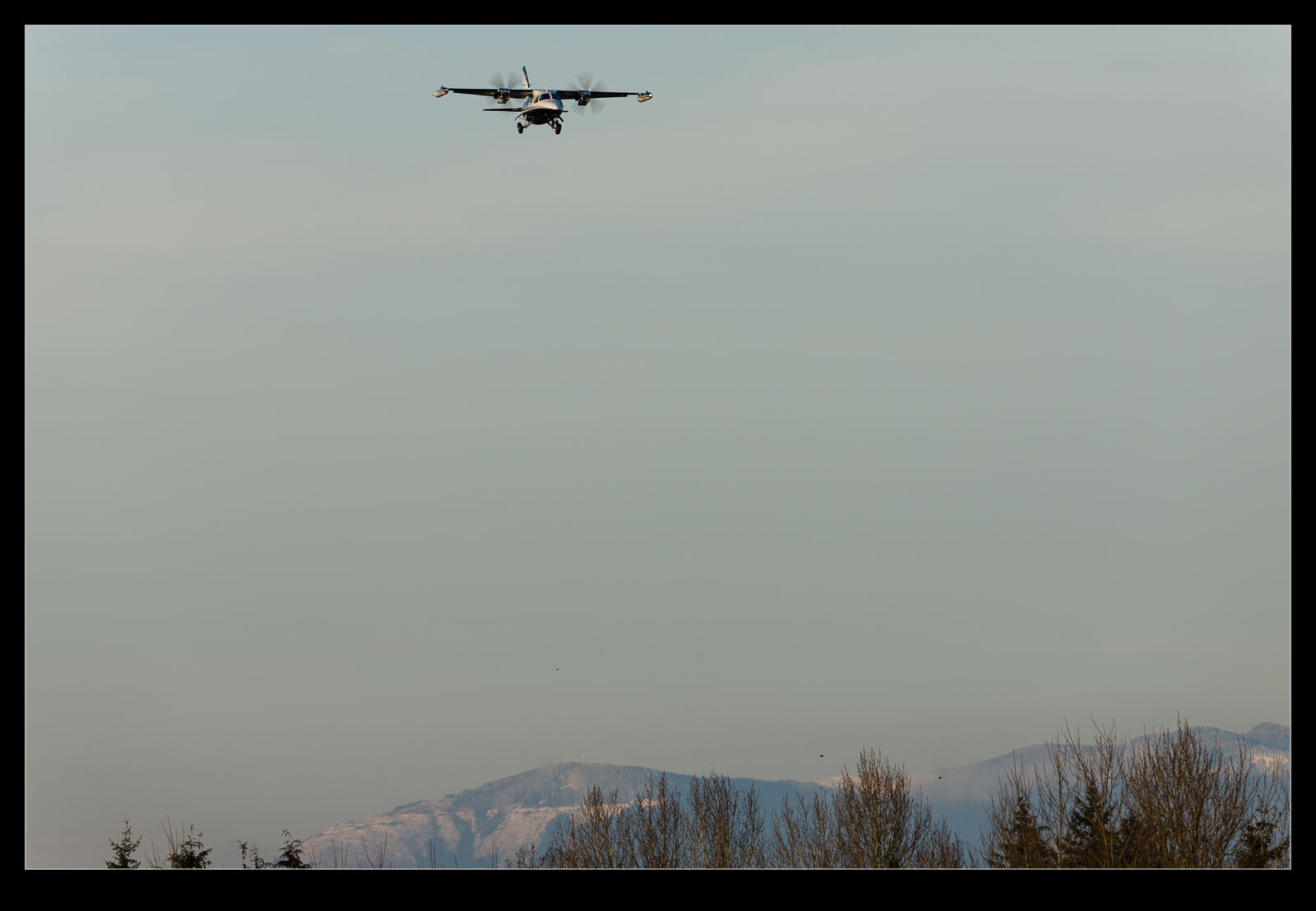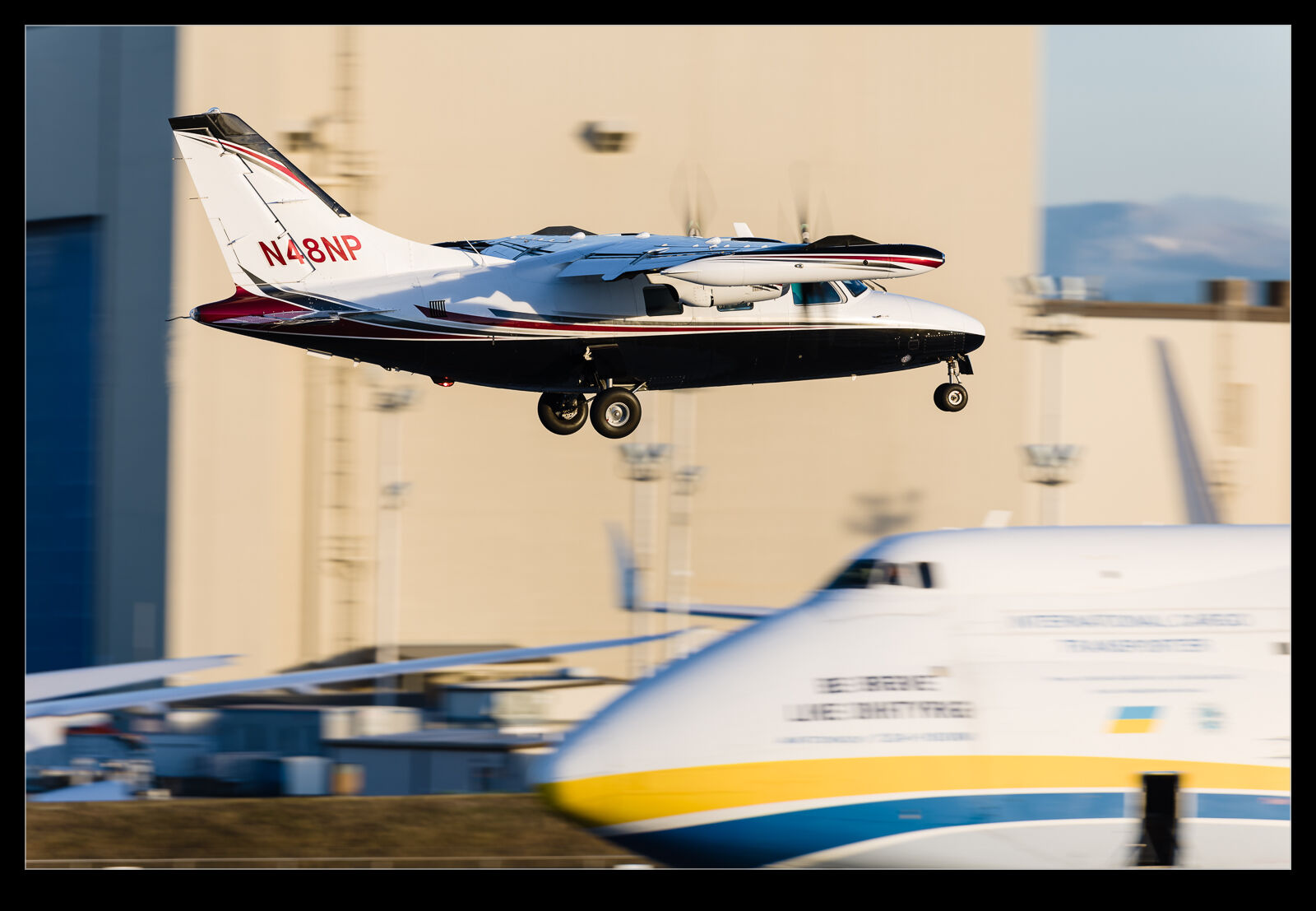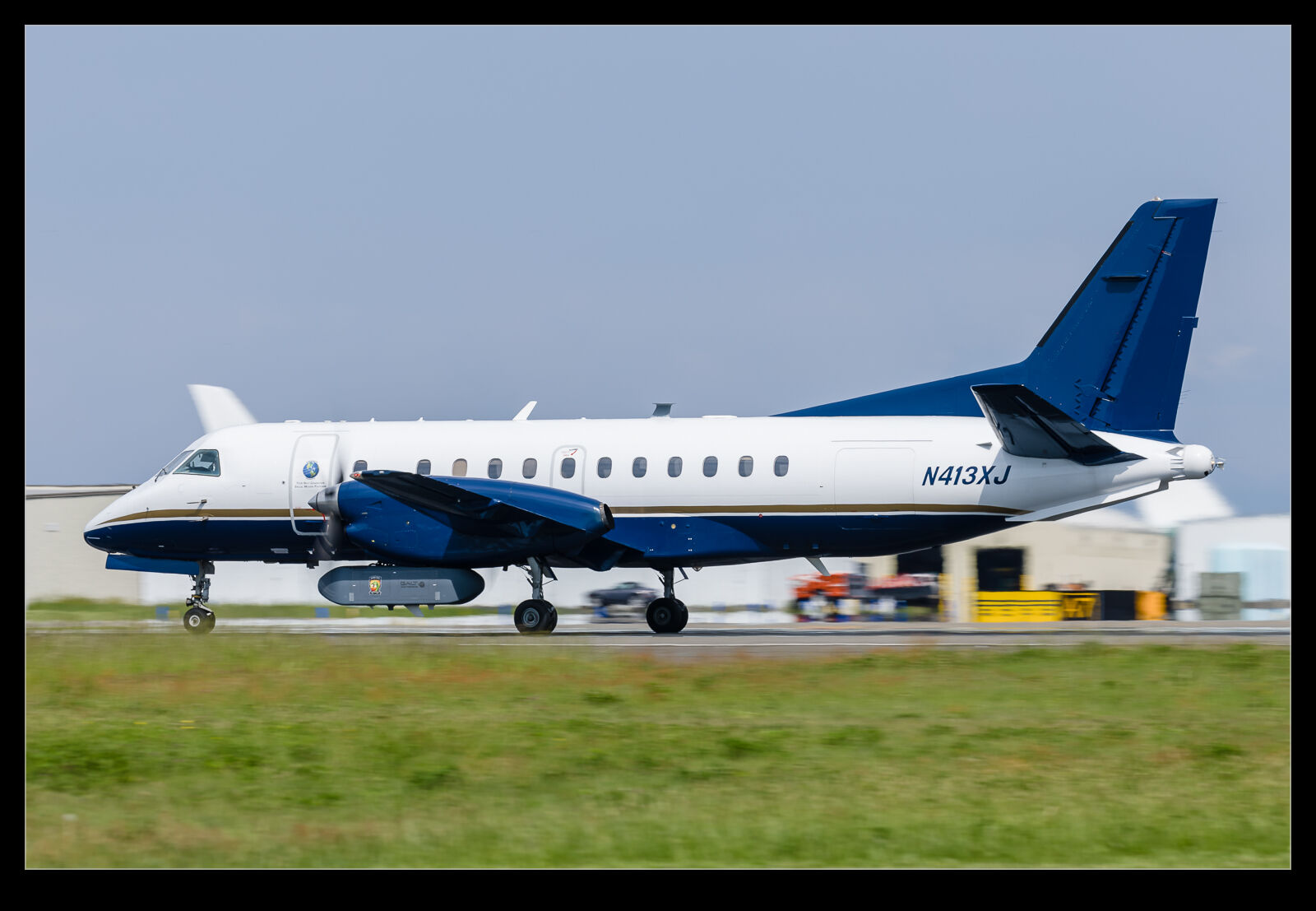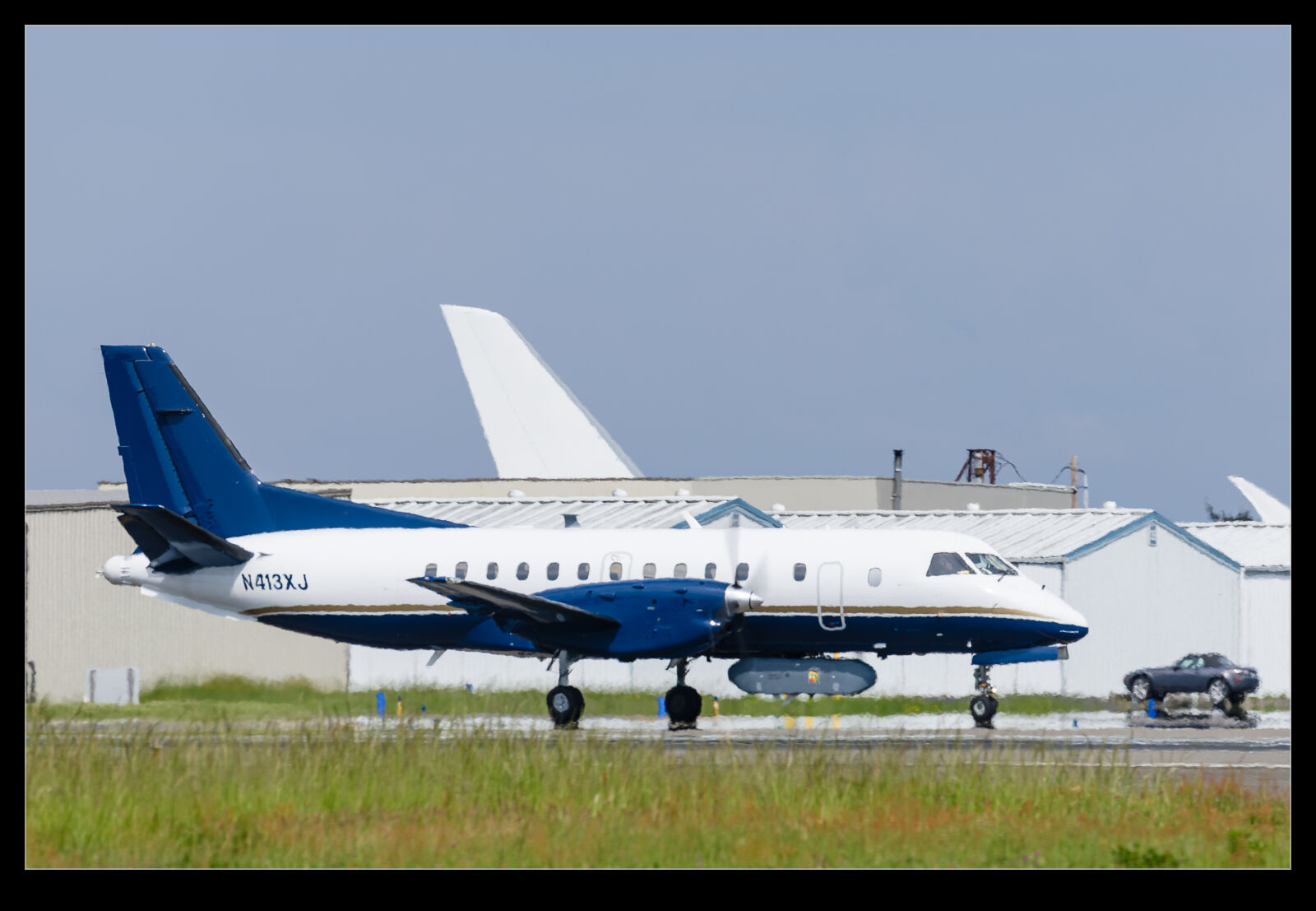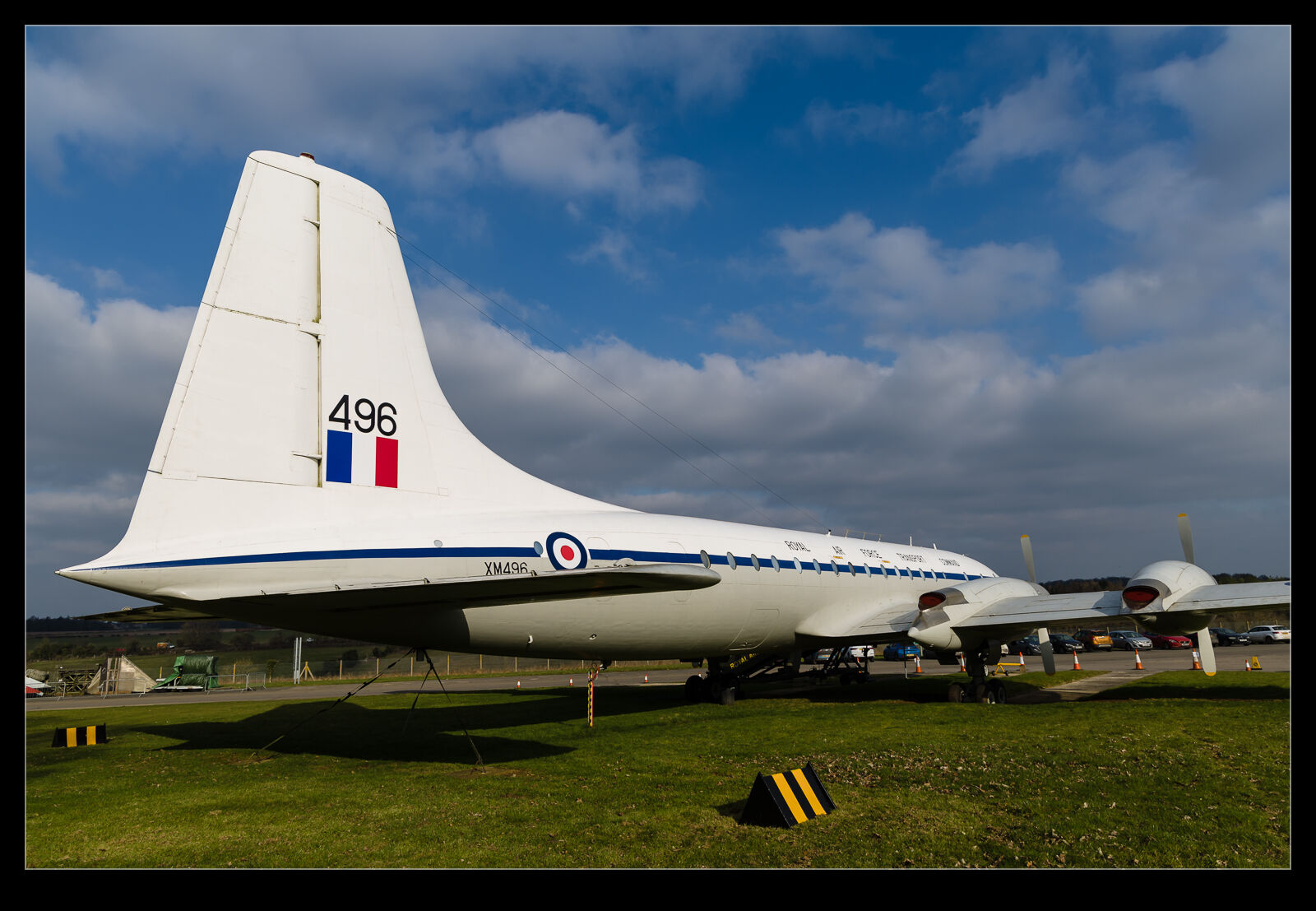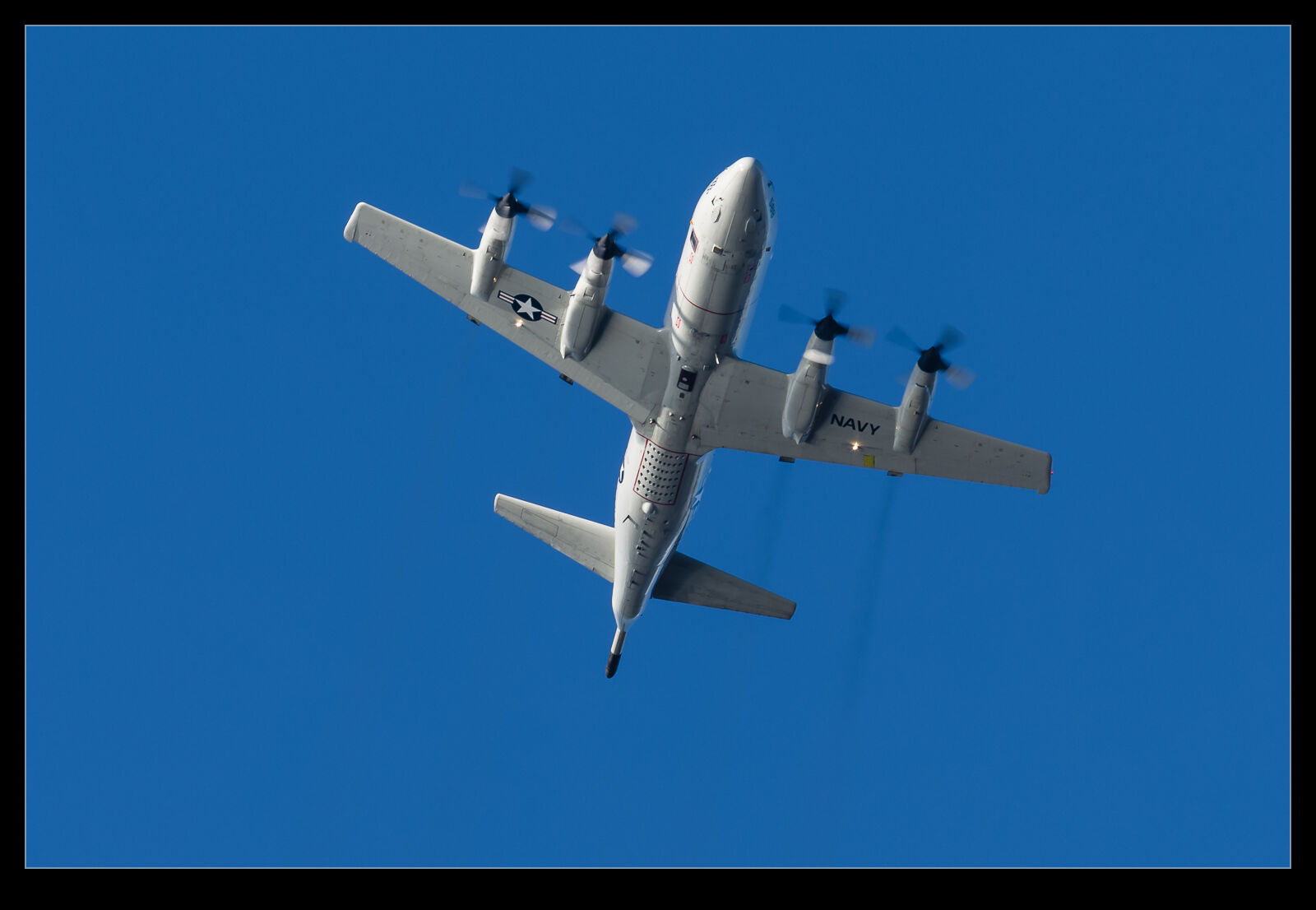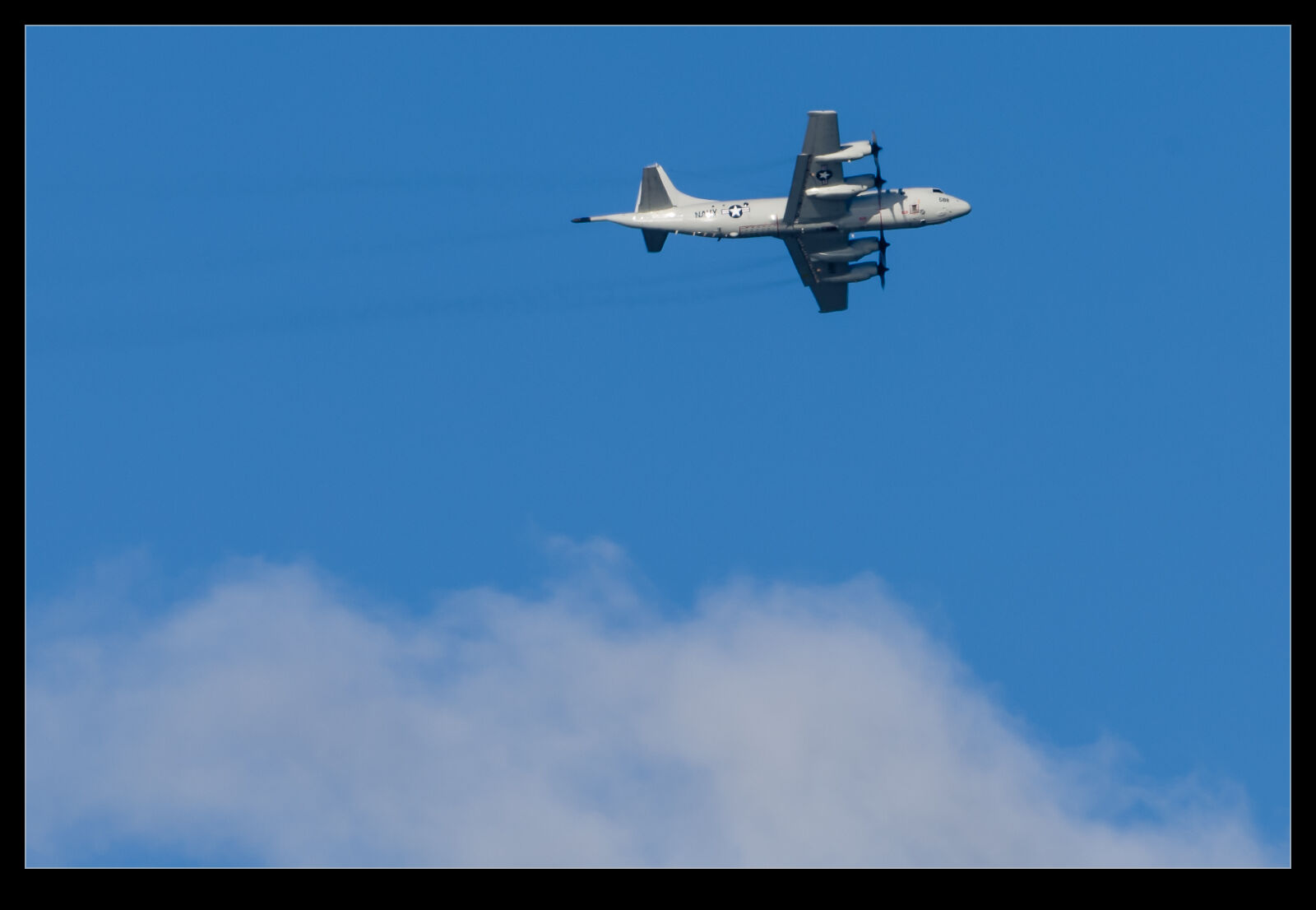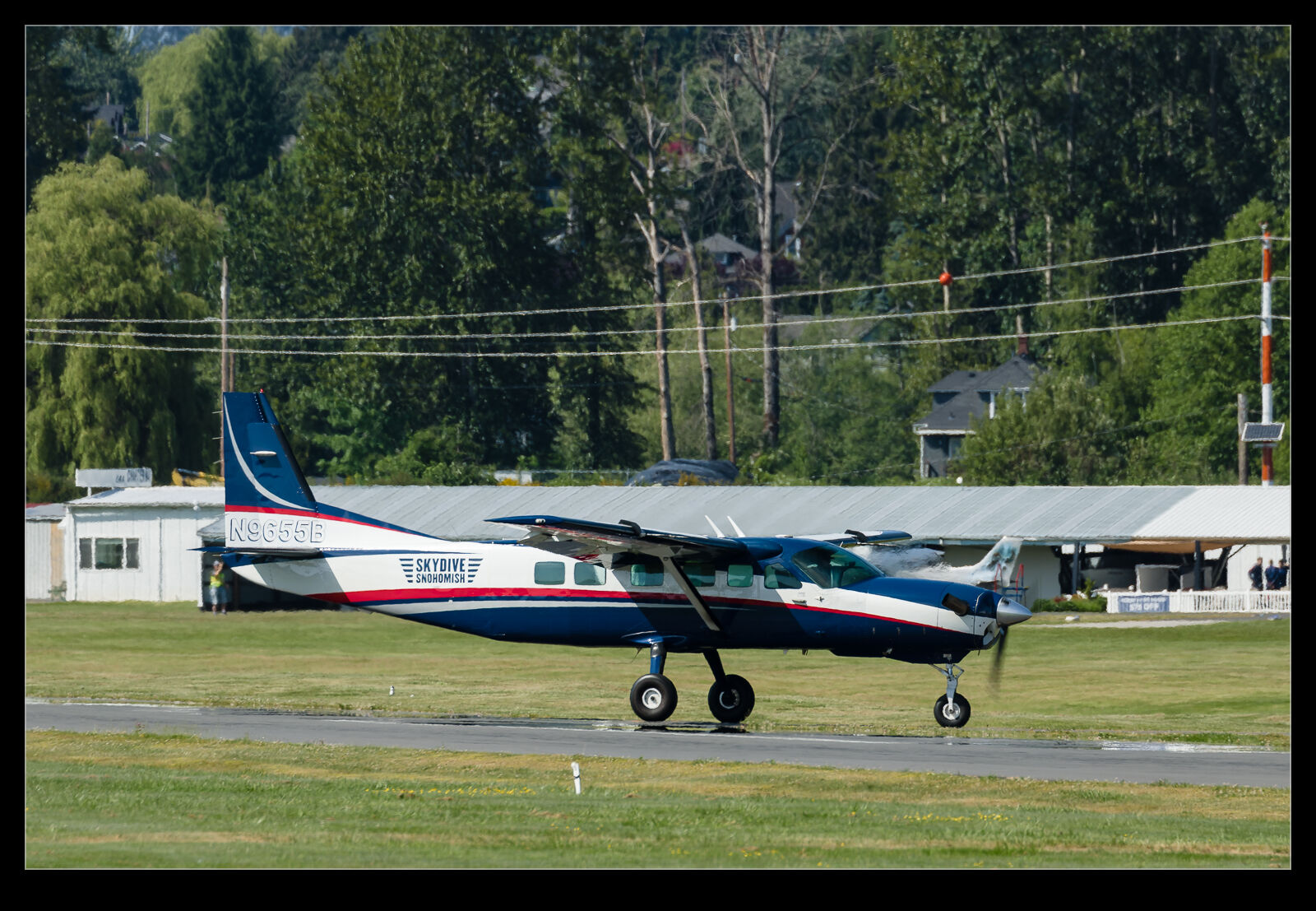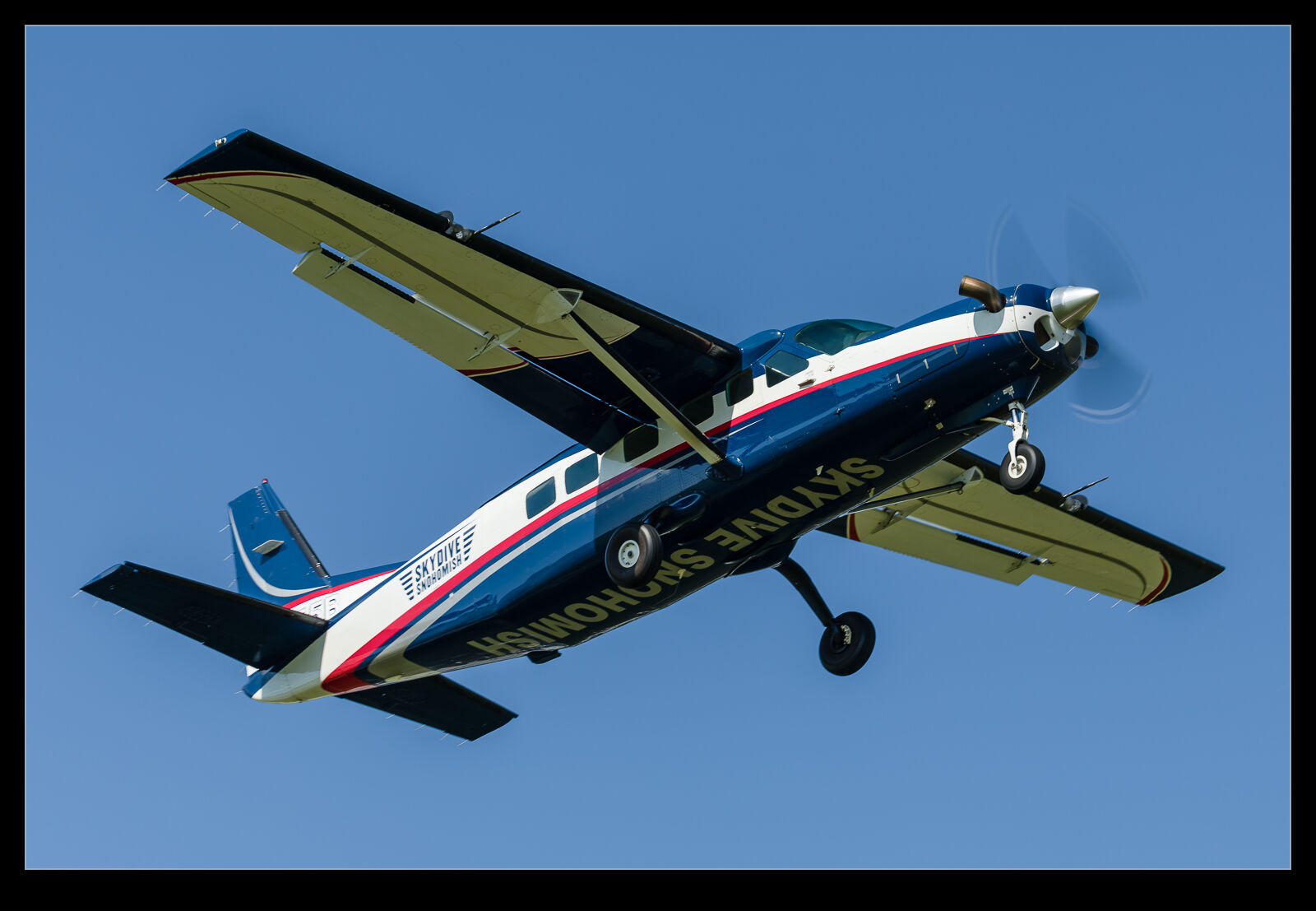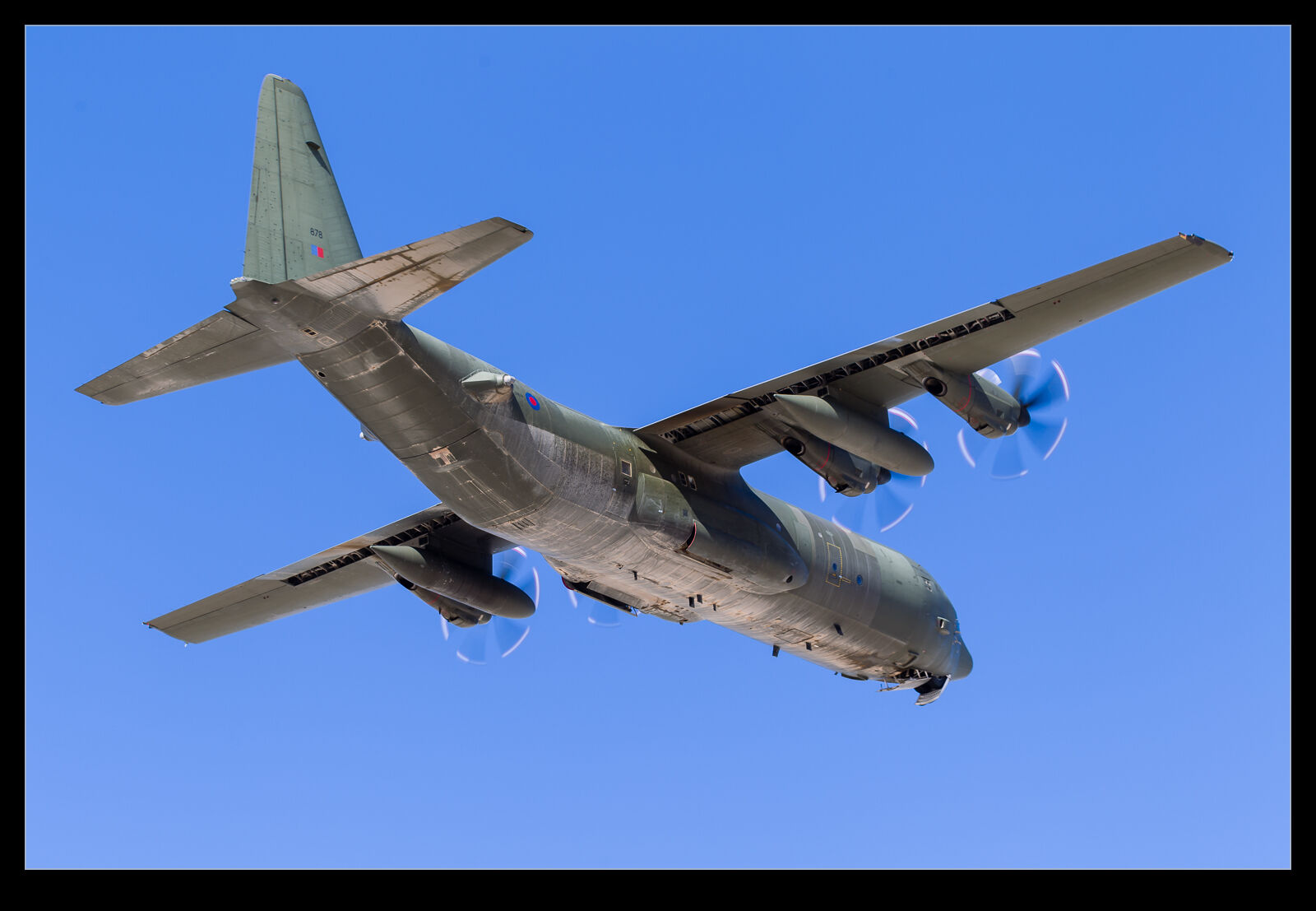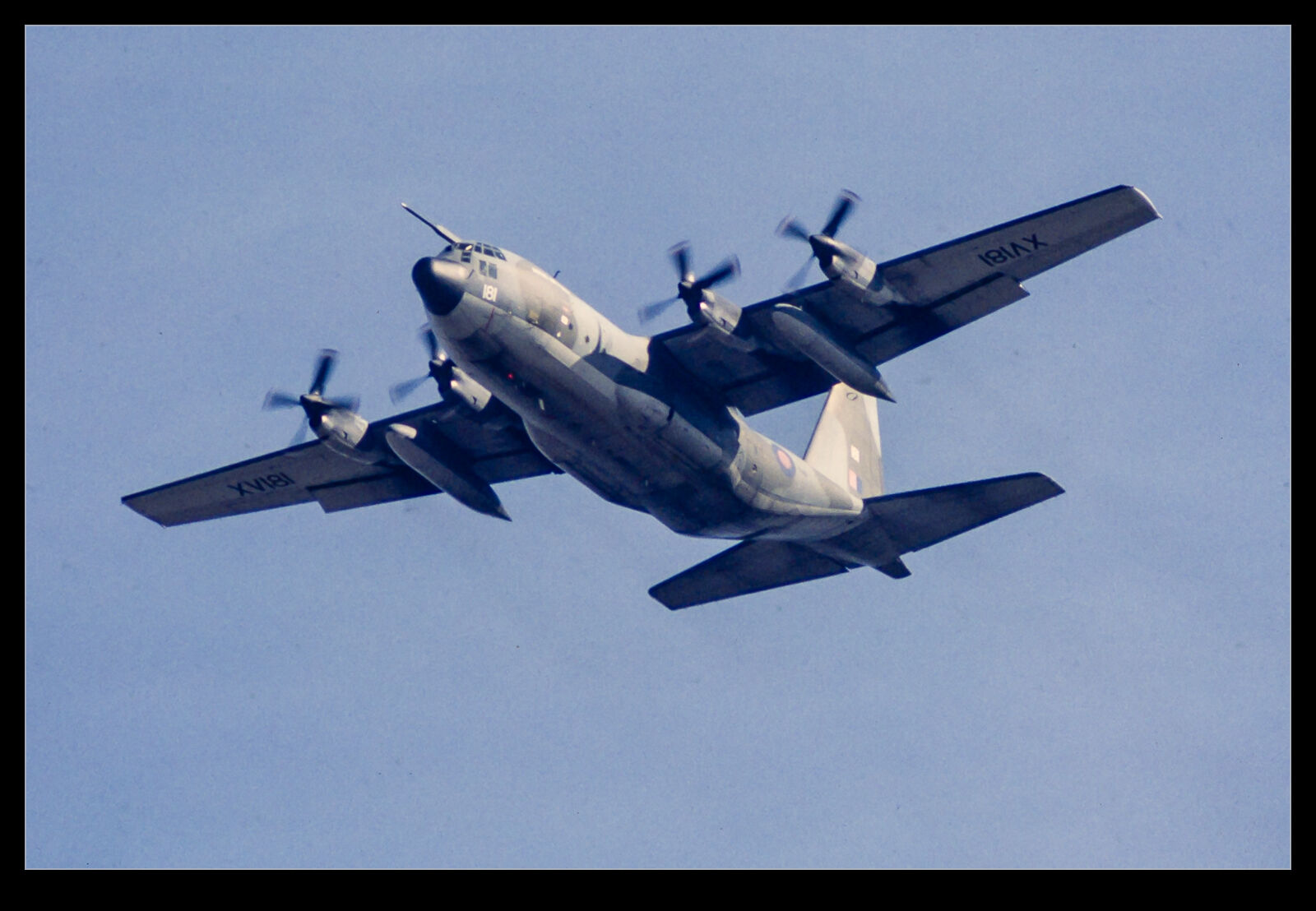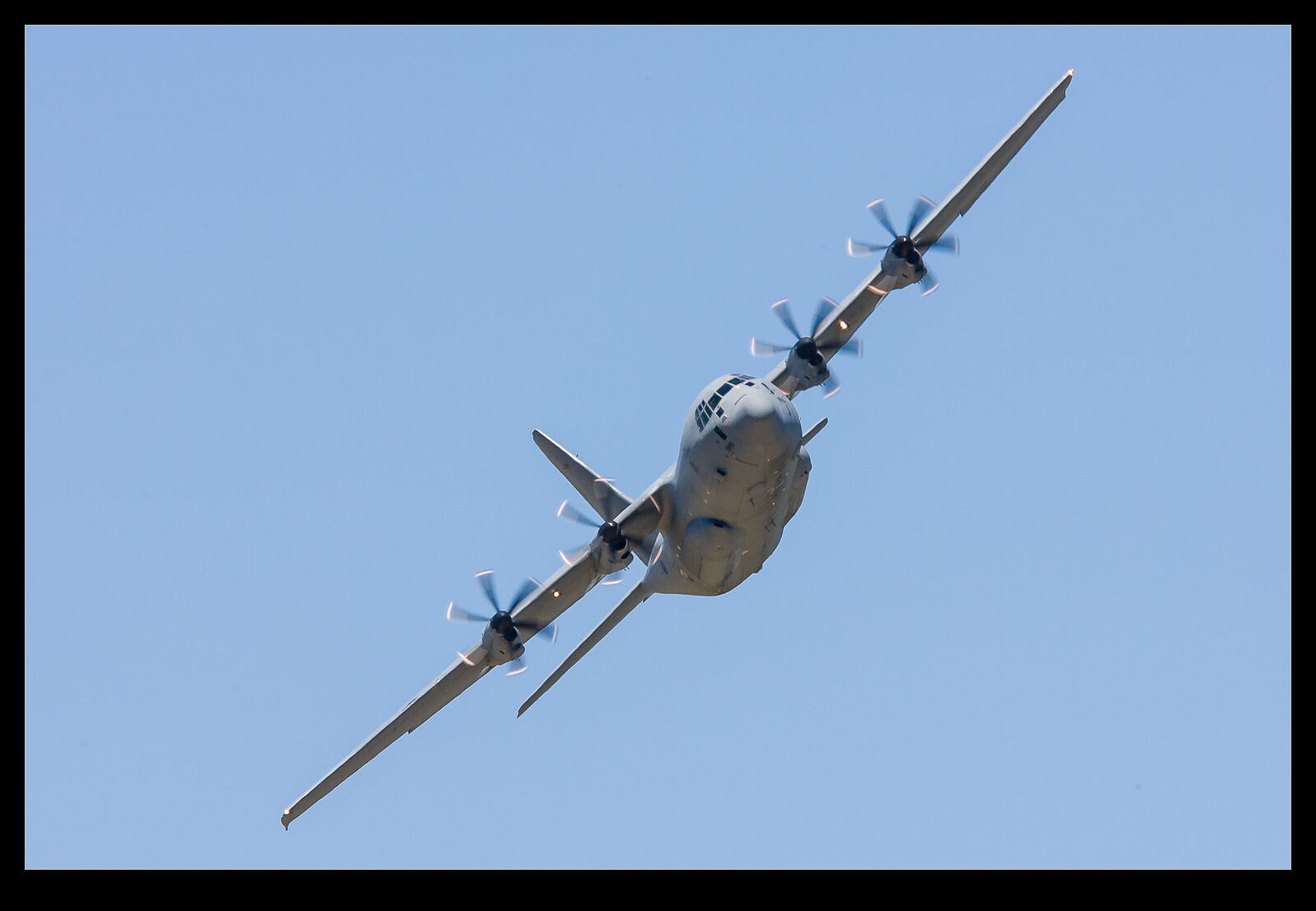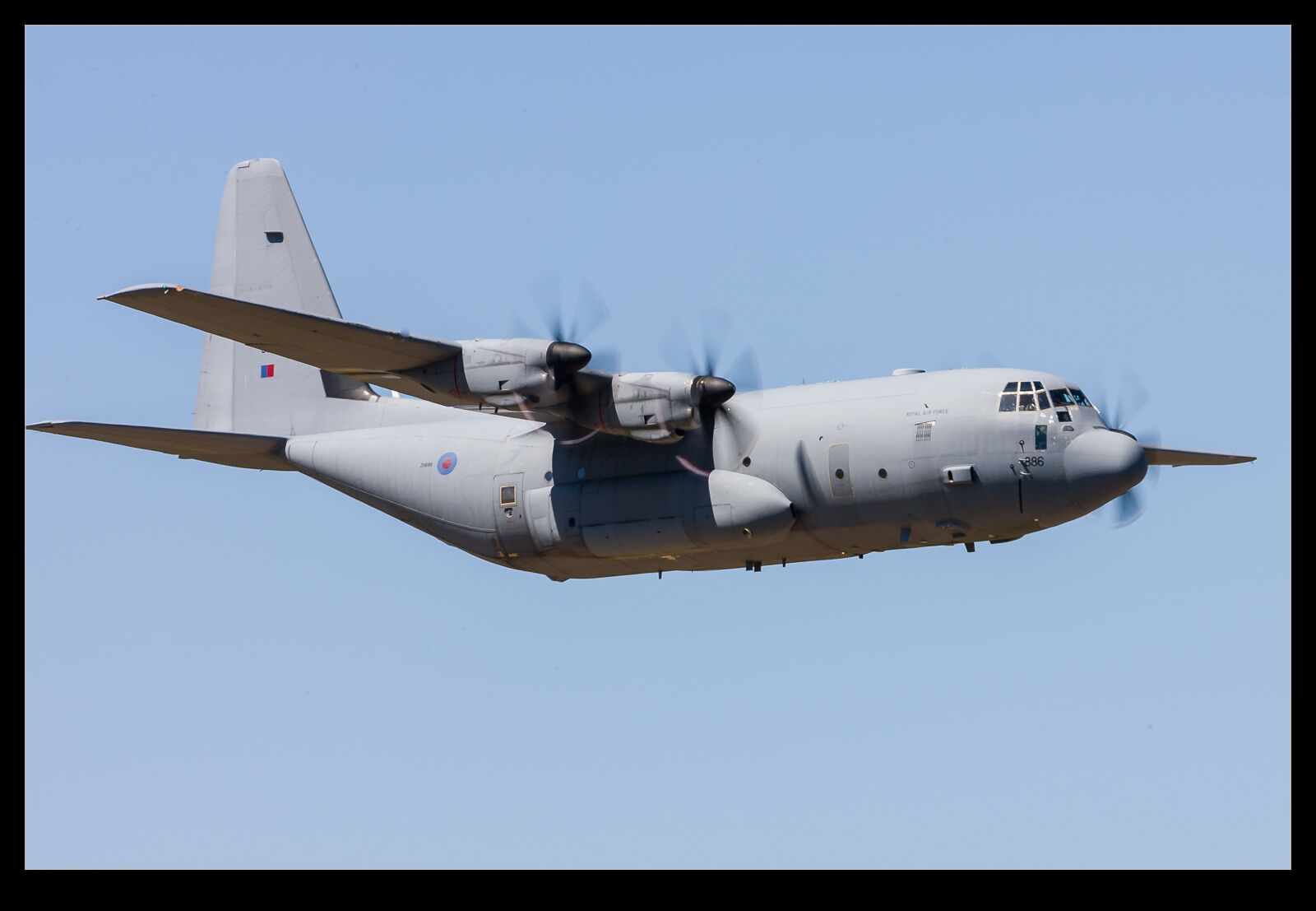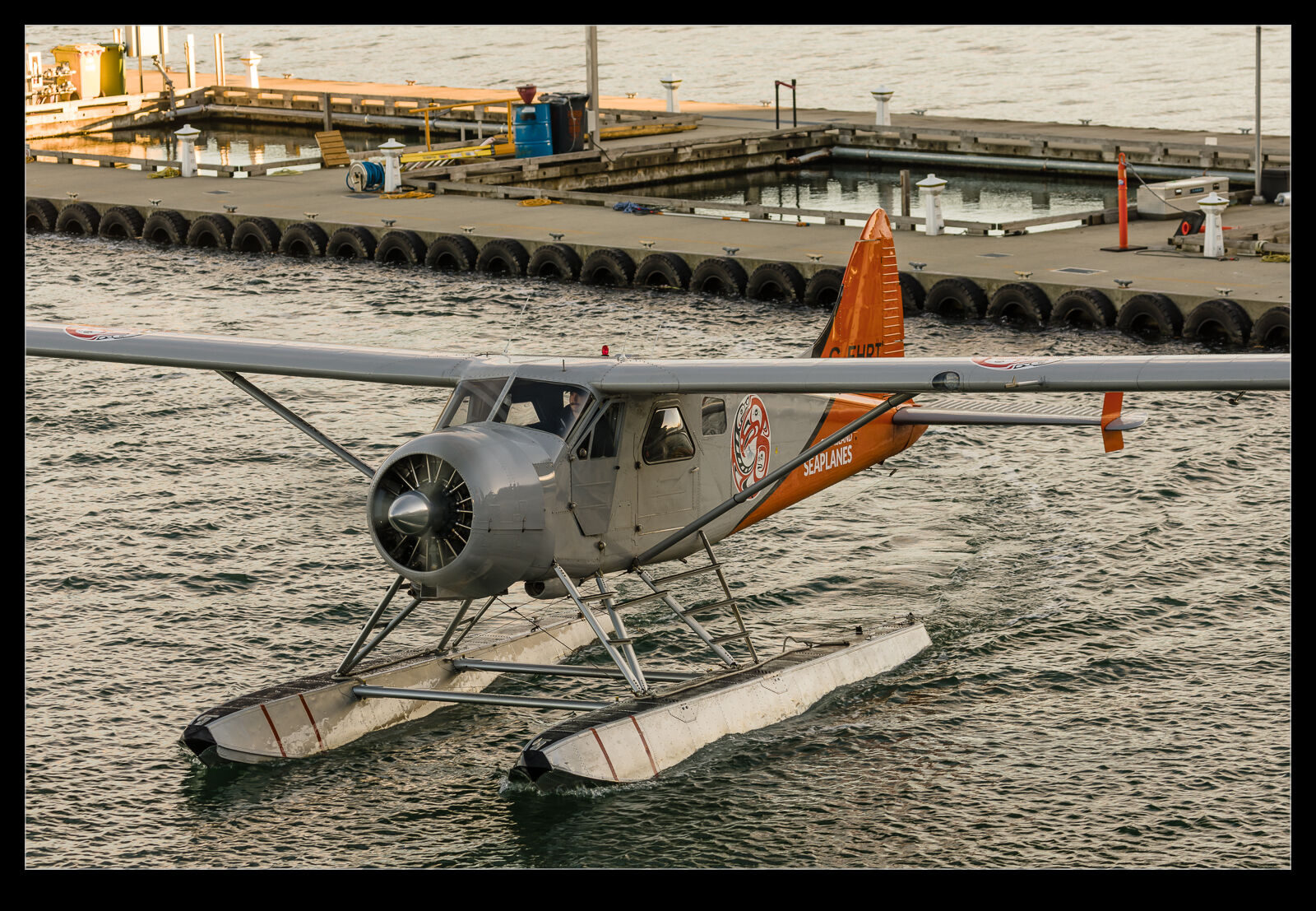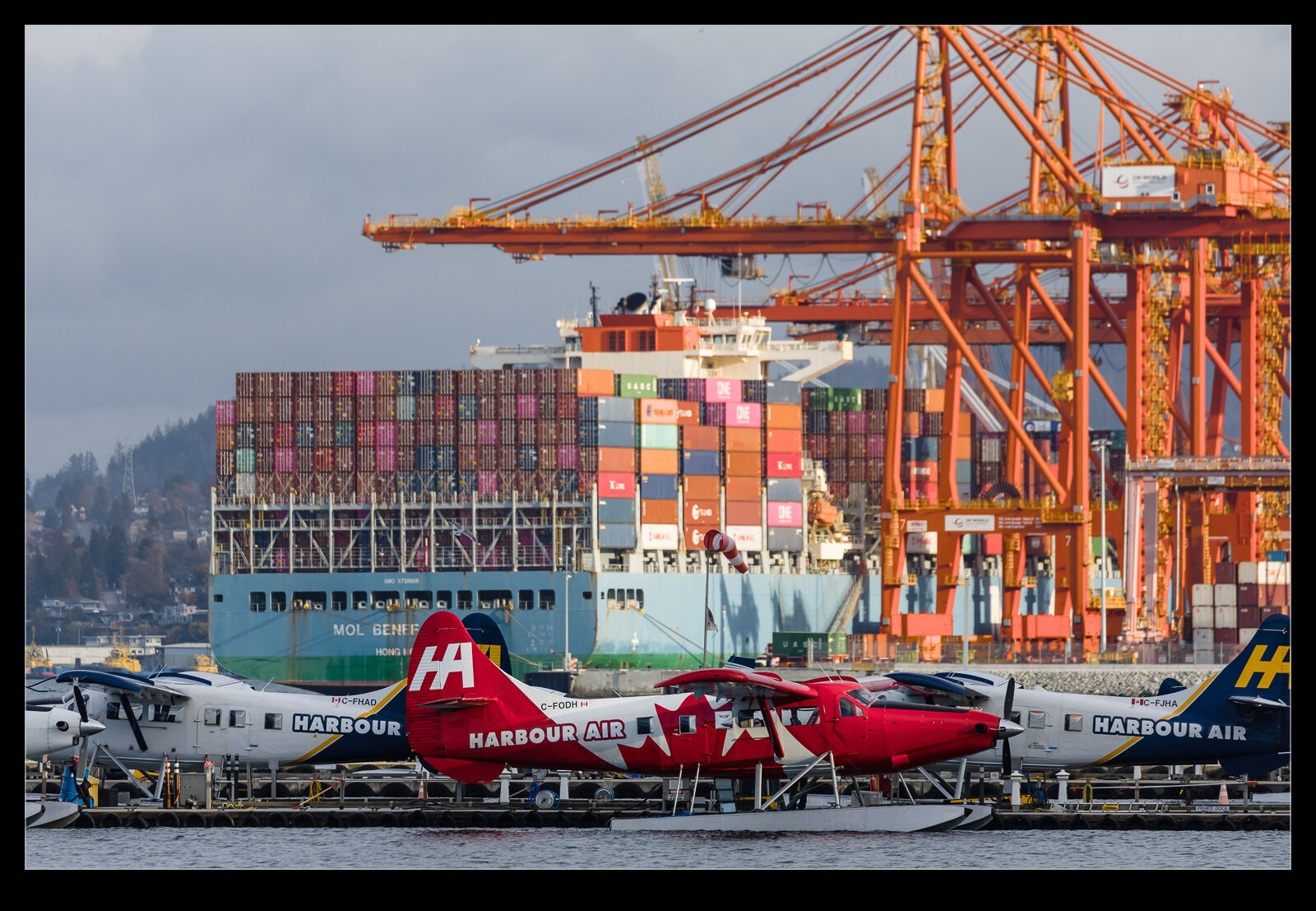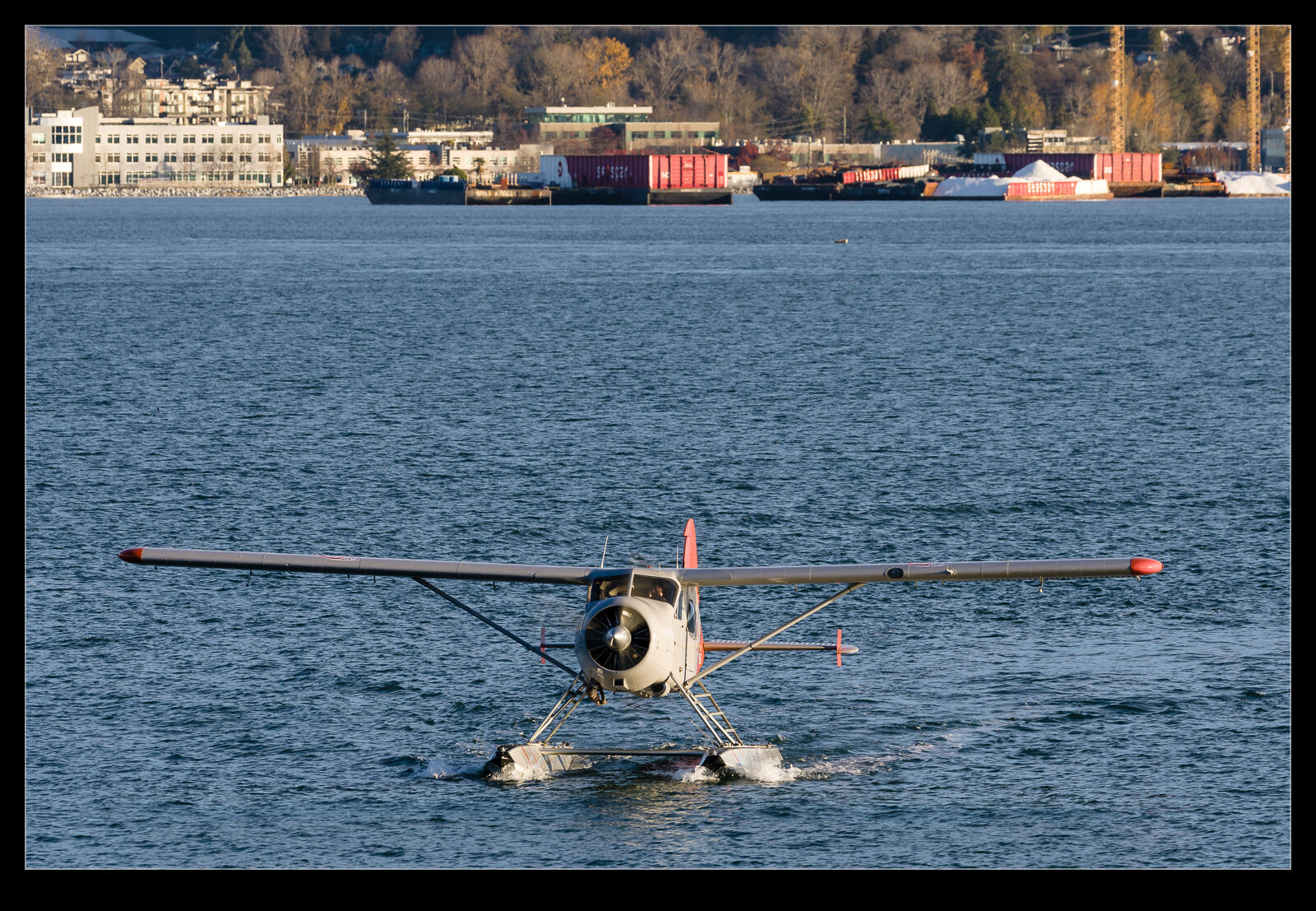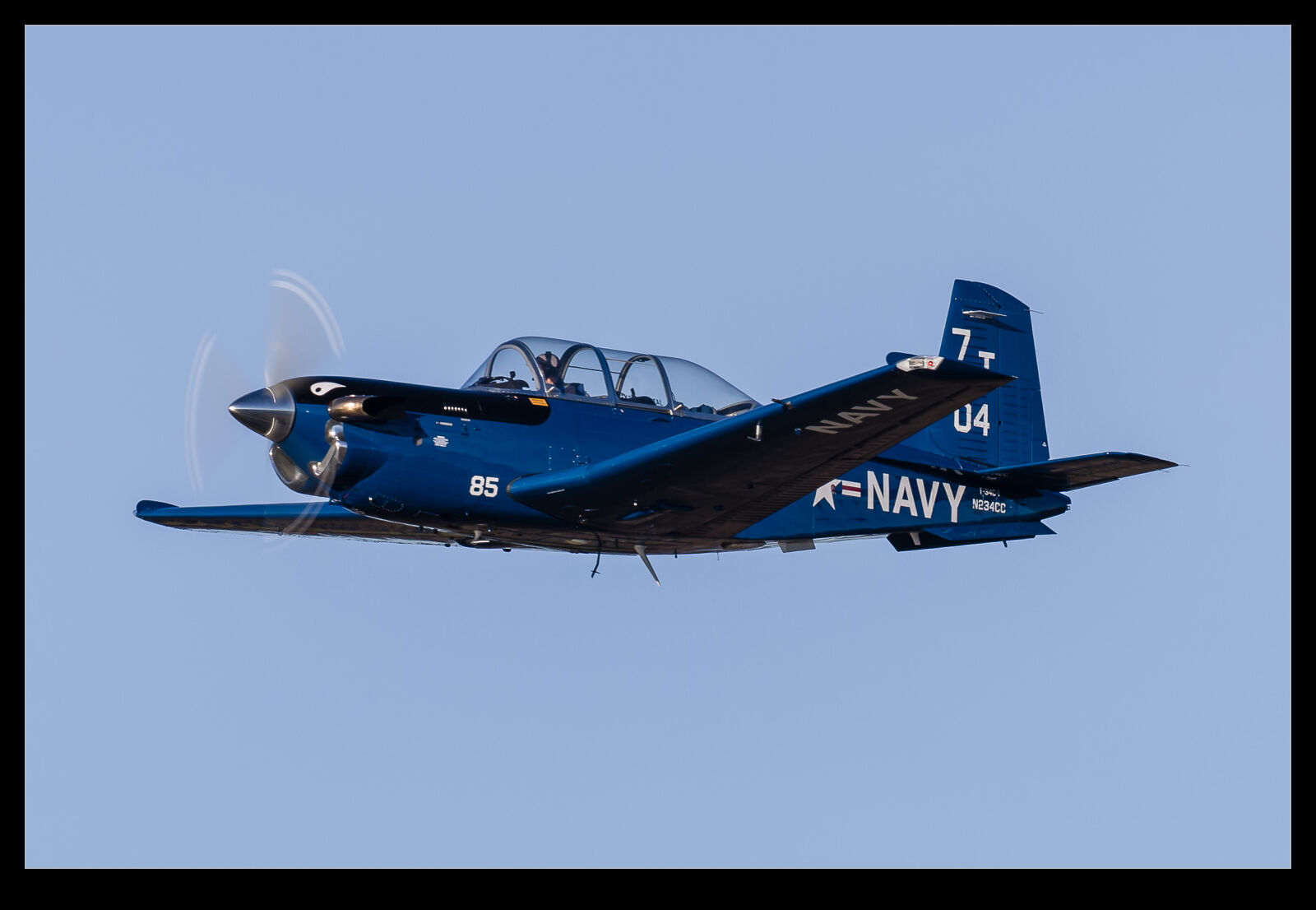 Beech built the Mentor trainer for the military with a piston engine before coming up with the more powerful turboprop version, the T-34C Turbo Mentor. This saw extensive service with the US Navy. Now there are plenty of them on the civil register including this one I saw one day departing from Paine Field. The dark blue paint enhances the look of the plane and it looks like it has plenty of oomph. I imagine it is a ton of fun to have. I think it would be great to shoot air to air as well!
Beech built the Mentor trainer for the military with a piston engine before coming up with the more powerful turboprop version, the T-34C Turbo Mentor. This saw extensive service with the US Navy. Now there are plenty of them on the civil register including this one I saw one day departing from Paine Field. The dark blue paint enhances the look of the plane and it looks like it has plenty of oomph. I imagine it is a ton of fun to have. I think it would be great to shoot air to air as well!
Tag Archives: turboprop
Wandering Around an Avanti
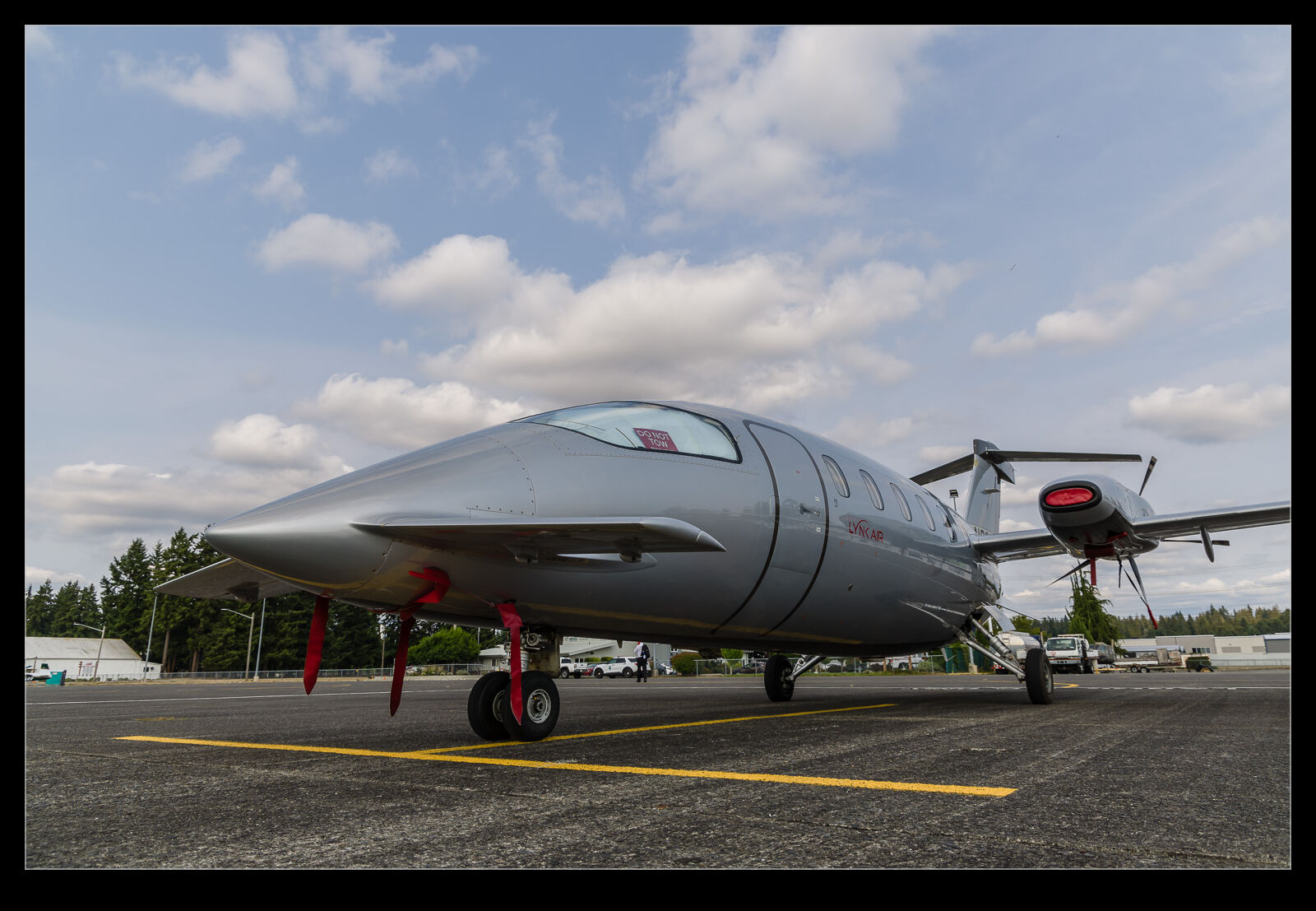 The Avantis that had been operating at Paine Field have relocated their base to Arlington instead. I think they are getting maintained there and so it is the new base of operations. One of them arrived while I was up that way and it parked up on the main ramp. I wandered out and chatted to the owner as he put the plane away for the evening and then, once he had gone, I continued to get some shots. The airframe is a selection of interesting shapes so I was trying to find good ways to shoot it.
The Avantis that had been operating at Paine Field have relocated their base to Arlington instead. I think they are getting maintained there and so it is the new base of operations. One of them arrived while I was up that way and it parked up on the main ramp. I wandered out and chatted to the owner as he put the plane away for the evening and then, once he had gone, I continued to get some shots. The airframe is a selection of interesting shapes so I was trying to find good ways to shoot it.
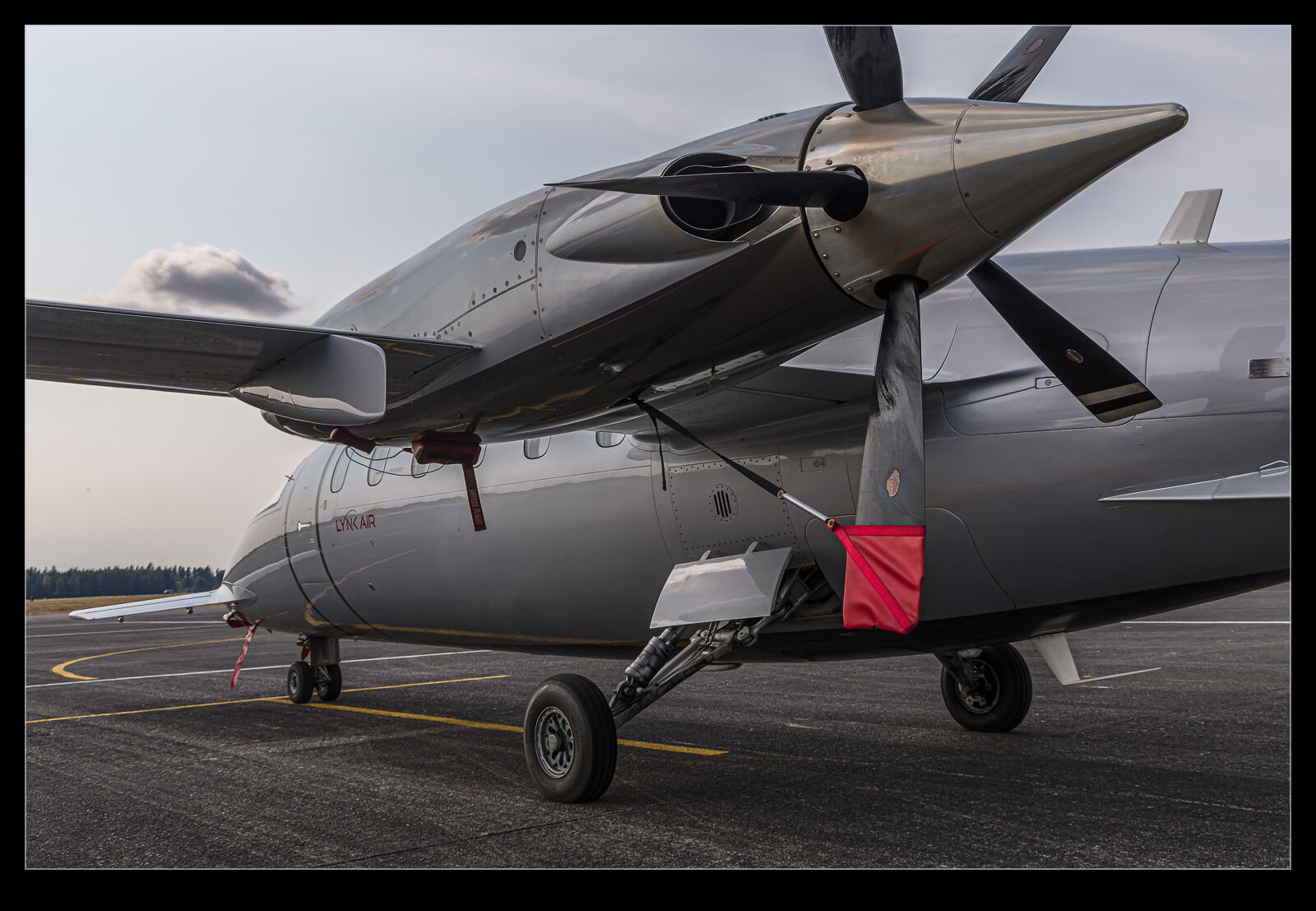 The fuselage shape tapers aggressively, there is the front wing, the main wing and the tailplane and then there are the engines and their props. Lots to try and work with. The engines are interesting in that the exhaust from the PT-6s blows right on to the roots of the props. This heat must be a form of deicing but it also must require something of the blade construction to manage the heat. There is some sign of the particles in the exhaust in the dirt patterns that form across the blade roots.
The fuselage shape tapers aggressively, there is the front wing, the main wing and the tailplane and then there are the engines and their props. Lots to try and work with. The engines are interesting in that the exhaust from the PT-6s blows right on to the roots of the props. This heat must be a form of deicing but it also must require something of the blade construction to manage the heat. There is some sign of the particles in the exhaust in the dirt patterns that form across the blade roots.
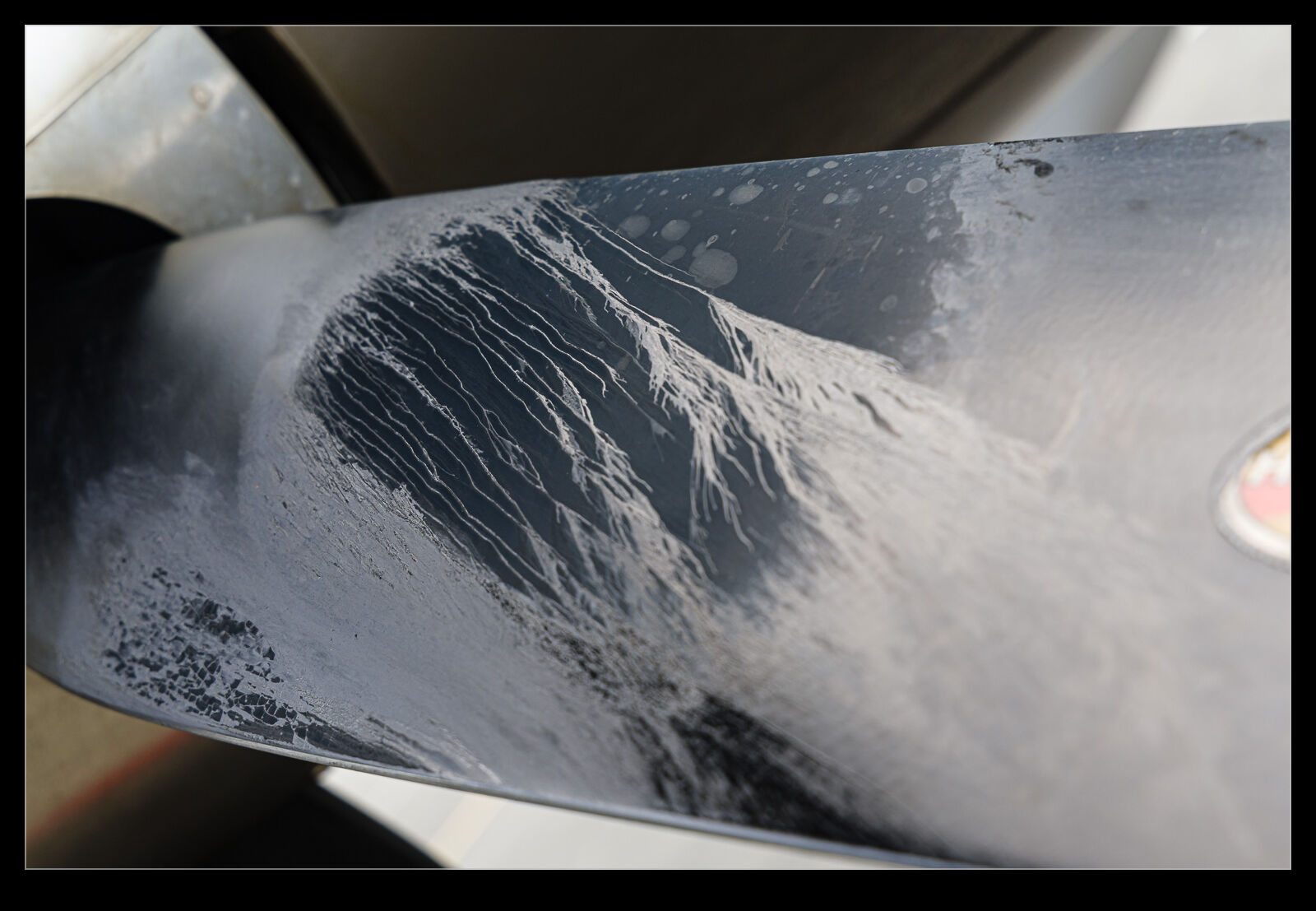 I’ve said it before and I’ll say it again. The Avanti is an amazing looking aircraft. The combination of cabin size and performance is unmatched by turboprops (and a lot of jets too). I wish it was more successful. Lots of people focus on its noise but that doesn’t bother me. However, having looked at those props in more detail, I can’t help but wonder how much of that noise is from the exhaust interacting with the blades rather than just the blades themselves.
I’ve said it before and I’ll say it again. The Avanti is an amazing looking aircraft. The combination of cabin size and performance is unmatched by turboprops (and a lot of jets too). I wish it was more successful. Lots of people focus on its noise but that doesn’t bother me. However, having looked at those props in more detail, I can’t help but wonder how much of that noise is from the exhaust interacting with the blades rather than just the blades themselves.
Wichita’s Finest is Everywhere in the Parks
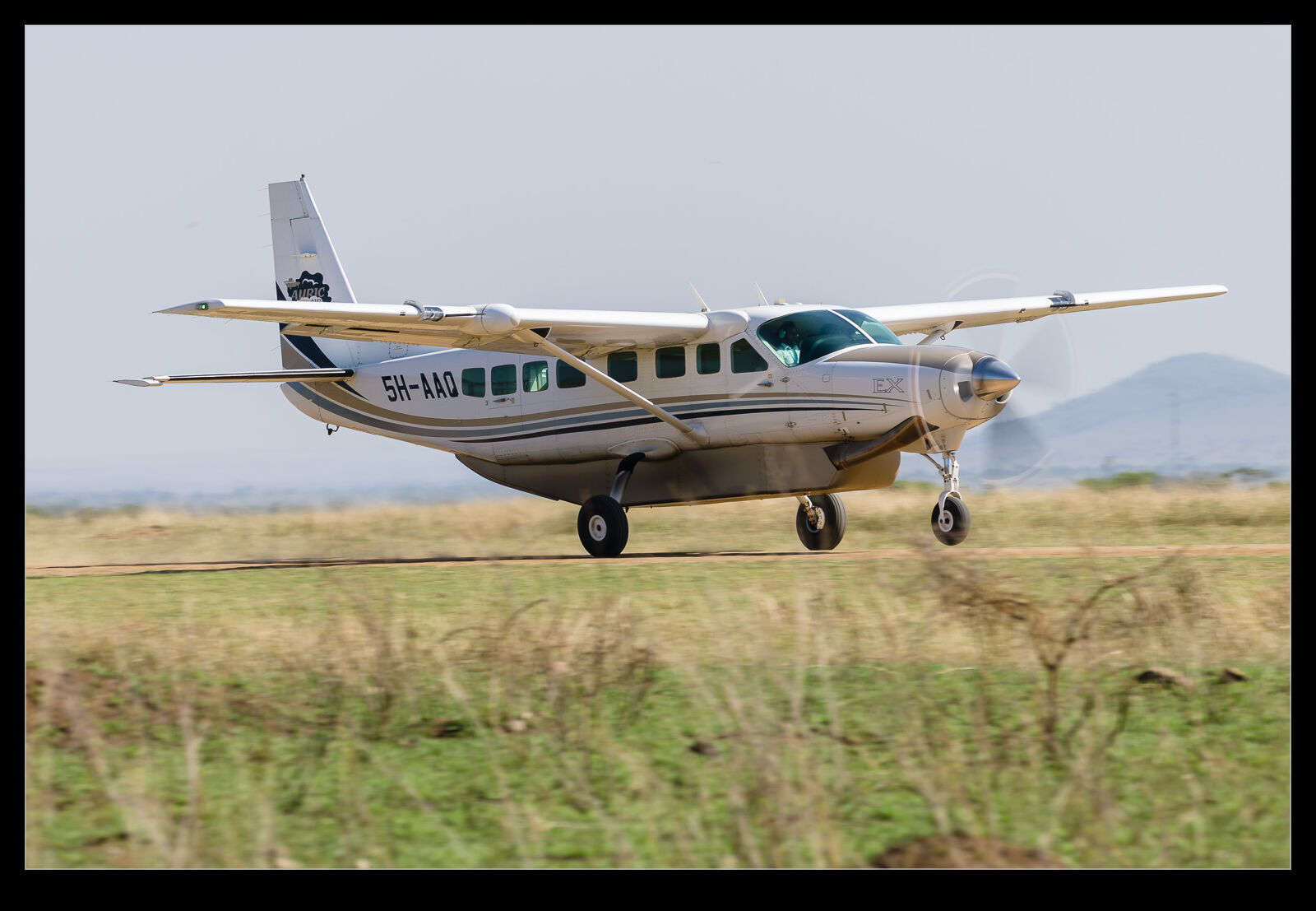 Kenya and Tanzania have many small airstrips scattered around the countryside including in the national parks. These provide quick transfers between locations if you are willing or able to pay and don’t want the long and bumpy road trips. There are a variety of types that are used for these services and I shall show some others in upcoming posts. However, one type does dominate.
Kenya and Tanzania have many small airstrips scattered around the countryside including in the national parks. These provide quick transfers between locations if you are willing or able to pay and don’t want the long and bumpy road trips. There are a variety of types that are used for these services and I shall show some others in upcoming posts. However, one type does dominate.
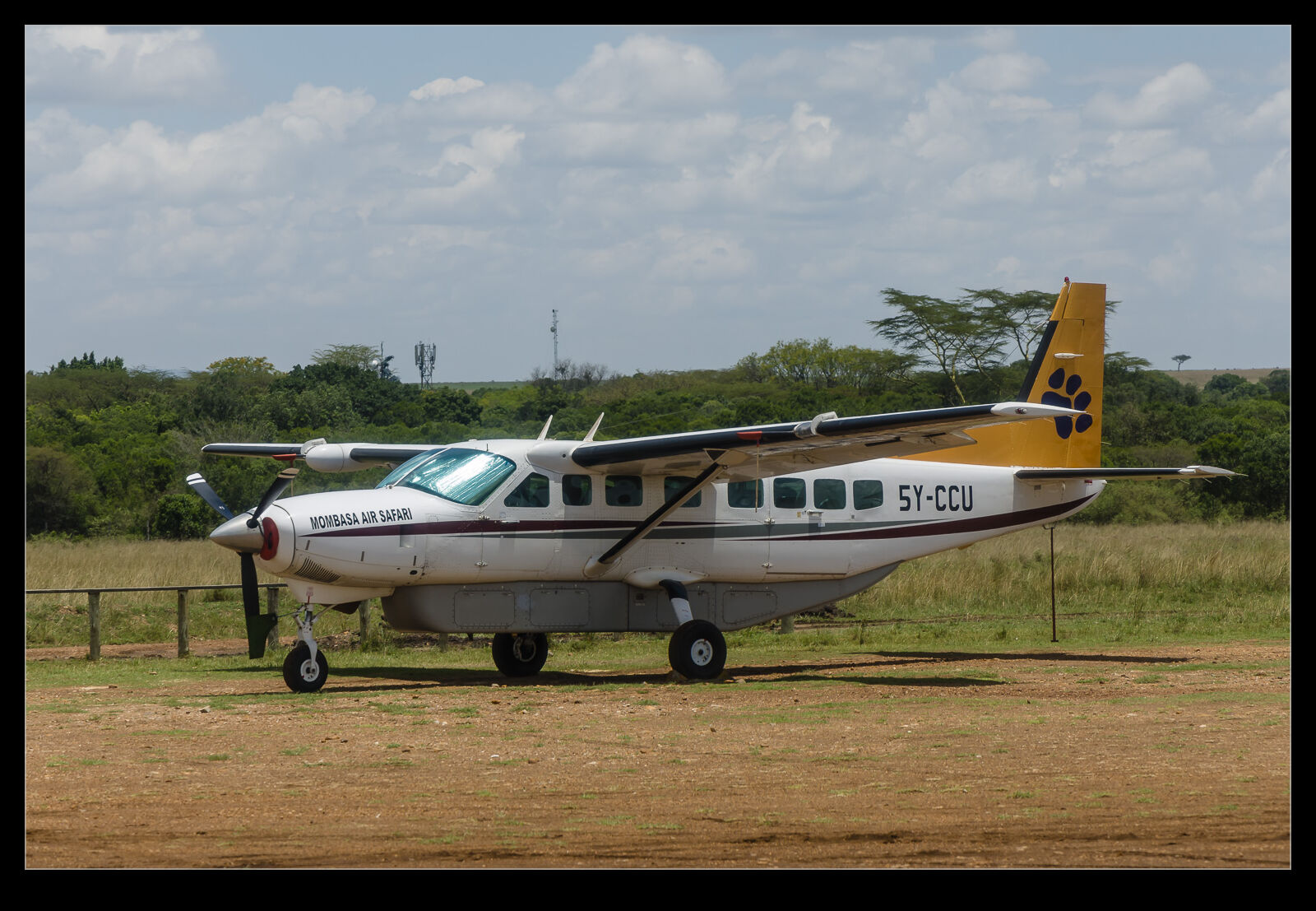 The Cessna Grand Caravan is everywhere in the region. It has the right size for many of the trips, it has sufficient capacity for luggage with the baggage pod beneath he fuselage, it is fine with the rough surface strips that are in most places and it is PT-6 powered so very reliable. We saw tons of them during the trip and also got to experience a flight on one. I was surprised to find it was a 1×2 configuration. I had assumed that they were 1×1 but not in this case. It got a lot of us in there but getting in and out was not an easy process. The aisle was minimal!
The Cessna Grand Caravan is everywhere in the region. It has the right size for many of the trips, it has sufficient capacity for luggage with the baggage pod beneath he fuselage, it is fine with the rough surface strips that are in most places and it is PT-6 powered so very reliable. We saw tons of them during the trip and also got to experience a flight on one. I was surprised to find it was a 1×2 configuration. I had assumed that they were 1×1 but not in this case. It got a lot of us in there but getting in and out was not an easy process. The aisle was minimal!
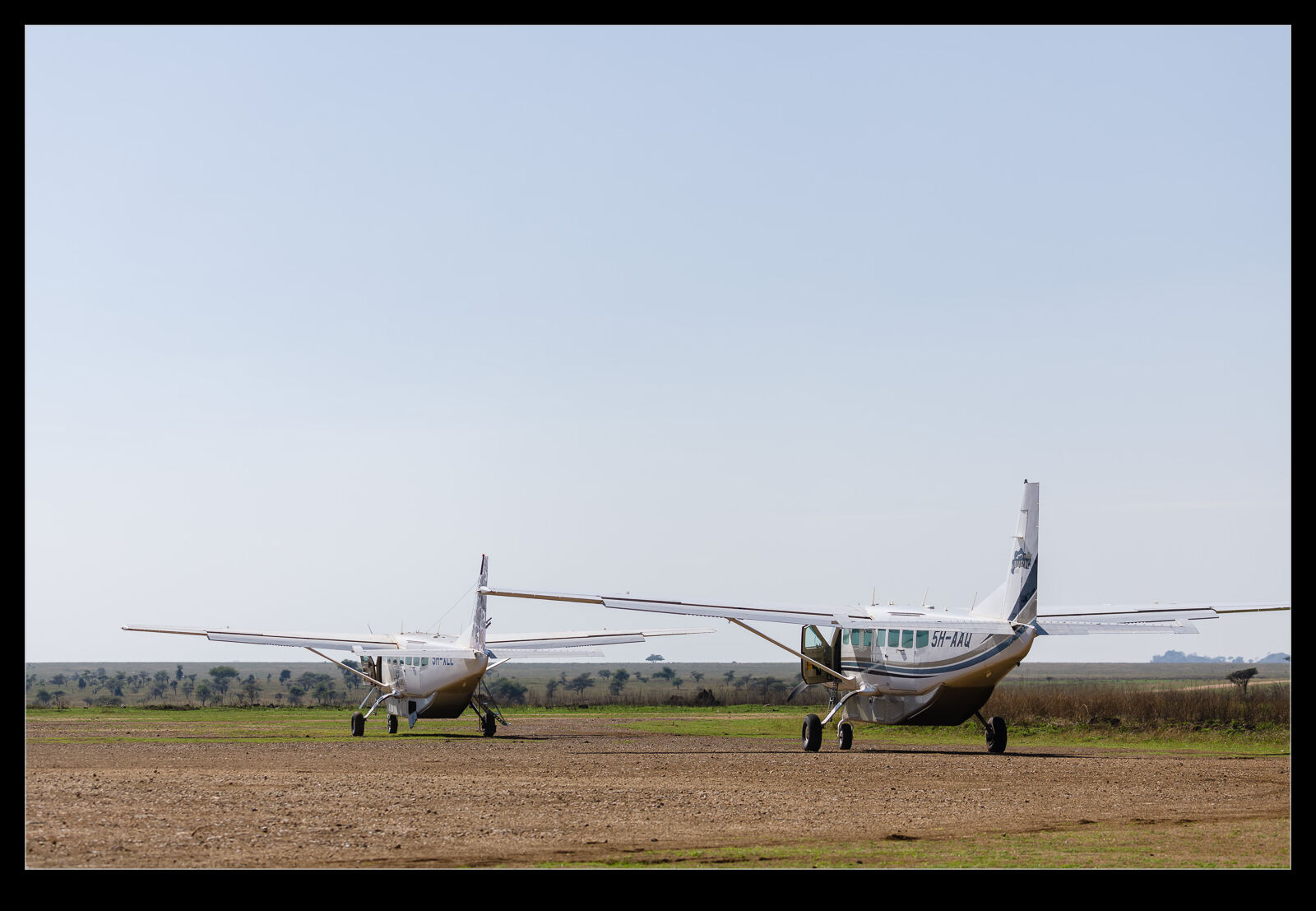 I have no idea how many Grand Caravans there are in use in rural Africa but I imagine that Cessna has delivered a ton of aircraft from Wichita to the region. I suspect that the best replacement is another Caravan. The Islander might once have been this sort of workhorse but the efficiency and reliability of the Caravan must be what has made it so ubiquitous.
I have no idea how many Grand Caravans there are in use in rural Africa but I imagine that Cessna has delivered a ton of aircraft from Wichita to the region. I suspect that the best replacement is another Caravan. The Islander might once have been this sort of workhorse but the efficiency and reliability of the Caravan must be what has made it so ubiquitous.
Sun on the MU-2
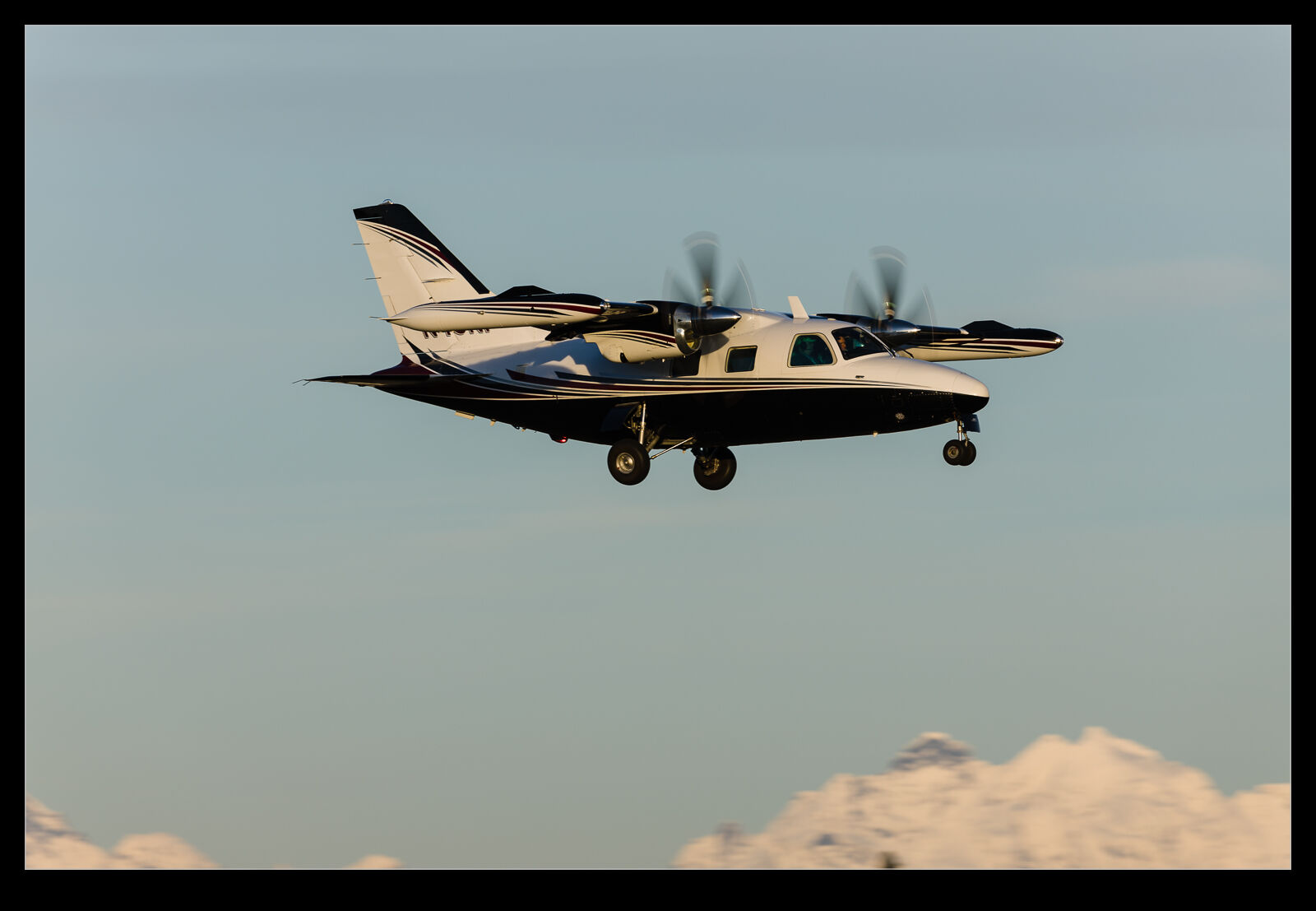 Regular readers of the blog will know that there are certain types that I seem destined to struggle to shoot in decent light. It might be the nicest of days, but the sun will go behind a cloud just before the intended subject appears. I thought the Mitsubishi MU-2 was one of those types but, a few months back, I finally got lucky. One came into Boeing Field on a day with good sun. Not the perfect conditions but it was still a relief to finally get some shots when it wasn’t overcast!
Regular readers of the blog will know that there are certain types that I seem destined to struggle to shoot in decent light. It might be the nicest of days, but the sun will go behind a cloud just before the intended subject appears. I thought the Mitsubishi MU-2 was one of those types but, a few months back, I finally got lucky. One came into Boeing Field on a day with good sun. Not the perfect conditions but it was still a relief to finally get some shots when it wasn’t overcast!
SAAB 340 With an Interesting Pod
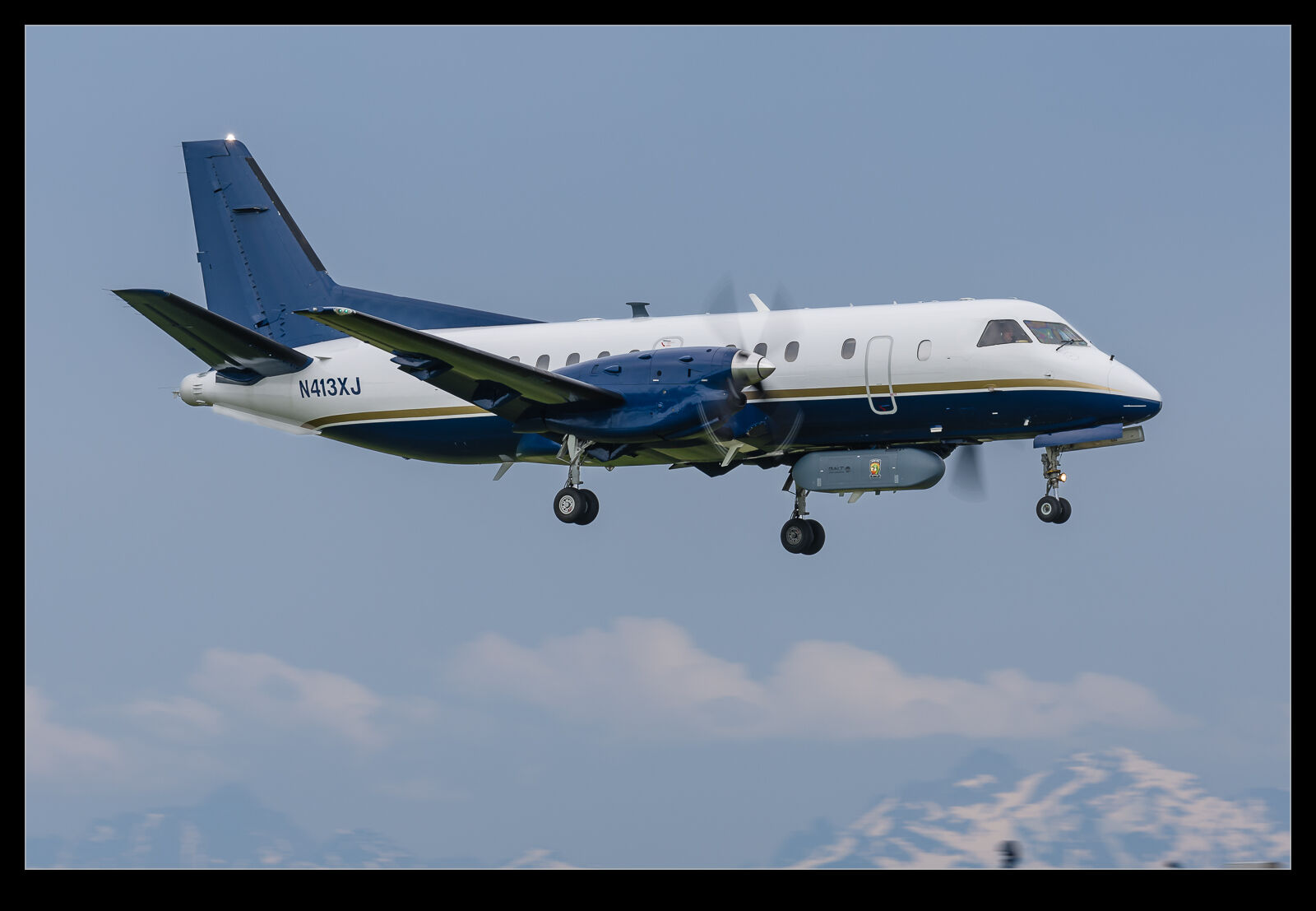 I promise that this is the last of the unusual types that headed to Alaska for a large military exercise. This one I caught as it came through Paine Field. I like the SAAB 340 anyway but stick a pod under the fuselage and I will be doubly interested. The company that operates this jet is based in San Diego from what I can tell. Their product naming might be coincidental, but I suspect I know the favorite author of someone high in the company.
I promise that this is the last of the unusual types that headed to Alaska for a large military exercise. This one I caught as it came through Paine Field. I like the SAAB 340 anyway but stick a pod under the fuselage and I will be doubly interested. The company that operates this jet is based in San Diego from what I can tell. Their product naming might be coincidental, but I suspect I know the favorite author of someone high in the company.
Bristol Britannia
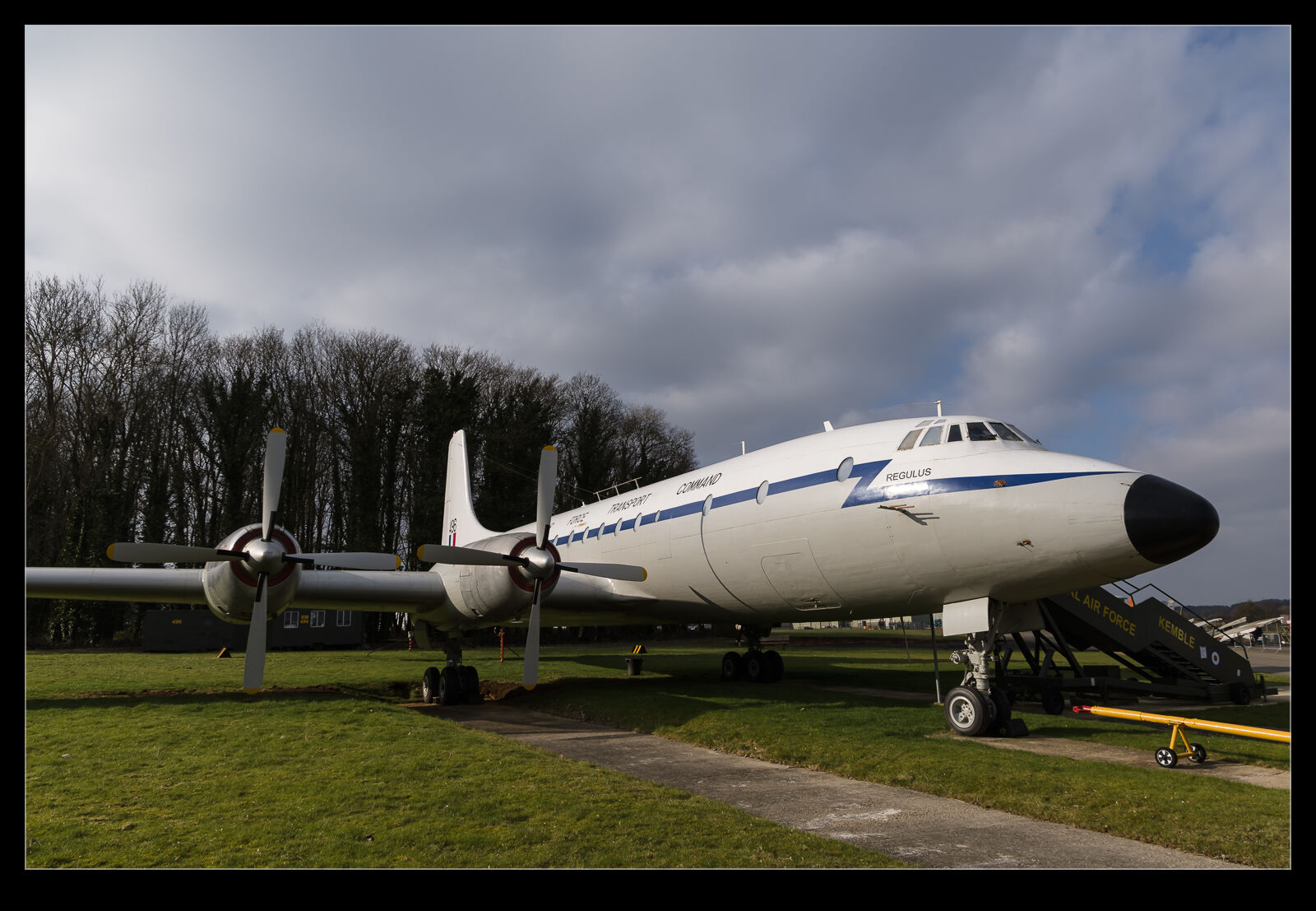 There are many aircraft that the British aircraft industry produced in the middle to late 20th century that did not end up being terribly successful. There was the occasional commercial product in there but a lot that did not have large production numbers, even by the standards of the day. It was not unusual for the Royal Air Force to end up operating a few of these as the government of the day found a way to prop up an ailing manufacturer. One type like this was the Bristol Britannia.
There are many aircraft that the British aircraft industry produced in the middle to late 20th century that did not end up being terribly successful. There was the occasional commercial product in there but a lot that did not have large production numbers, even by the standards of the day. It was not unusual for the Royal Air Force to end up operating a few of these as the government of the day found a way to prop up an ailing manufacturer. One type like this was the Bristol Britannia.
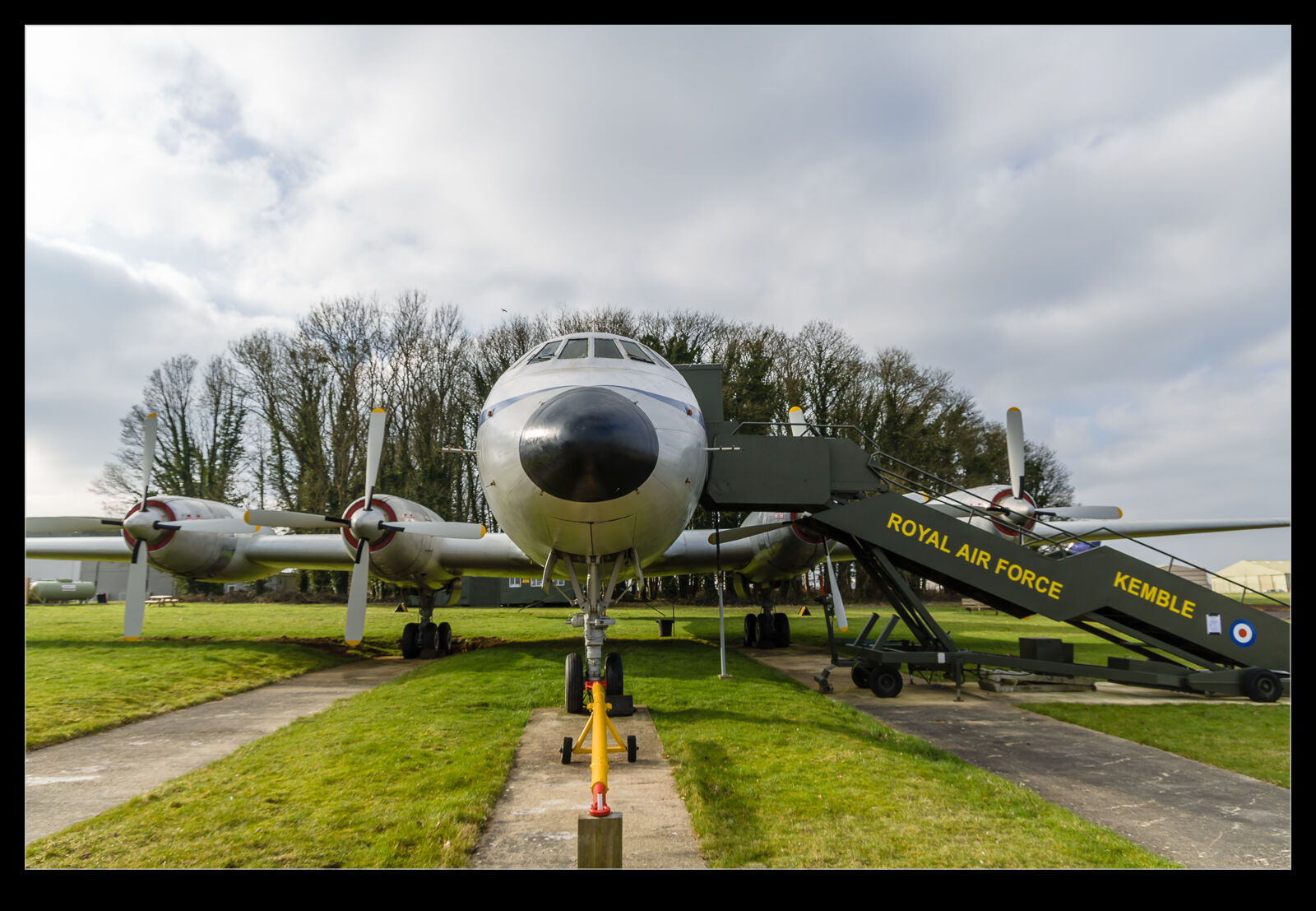 A turboprop airliner, it was too large given that jets had taken over the market by the time it was coming into service. The Royal Air Force was the “willing” recipient of some of these airframes and, for transporting troops that didn’t have a choice in the matter, they were probably just fine. One of these airframes, Regulus, is not preserved at Cotswold Airport at Kemble in Gloucestershire. I didn’t know it was there until I was driving around the airport killing some time. It looks to be in great condition. I don’t know how well it is handling the corrosion risk that damp UK airfields offer but I hope it lasts a long time. There are a few of these around but not many.
A turboprop airliner, it was too large given that jets had taken over the market by the time it was coming into service. The Royal Air Force was the “willing” recipient of some of these airframes and, for transporting troops that didn’t have a choice in the matter, they were probably just fine. One of these airframes, Regulus, is not preserved at Cotswold Airport at Kemble in Gloucestershire. I didn’t know it was there until I was driving around the airport killing some time. It looks to be in great condition. I don’t know how well it is handling the corrosion risk that damp UK airfields offer but I hope it lasts a long time. There are a few of these around but not many.
Old and the New in the Pattern Over Whidbey
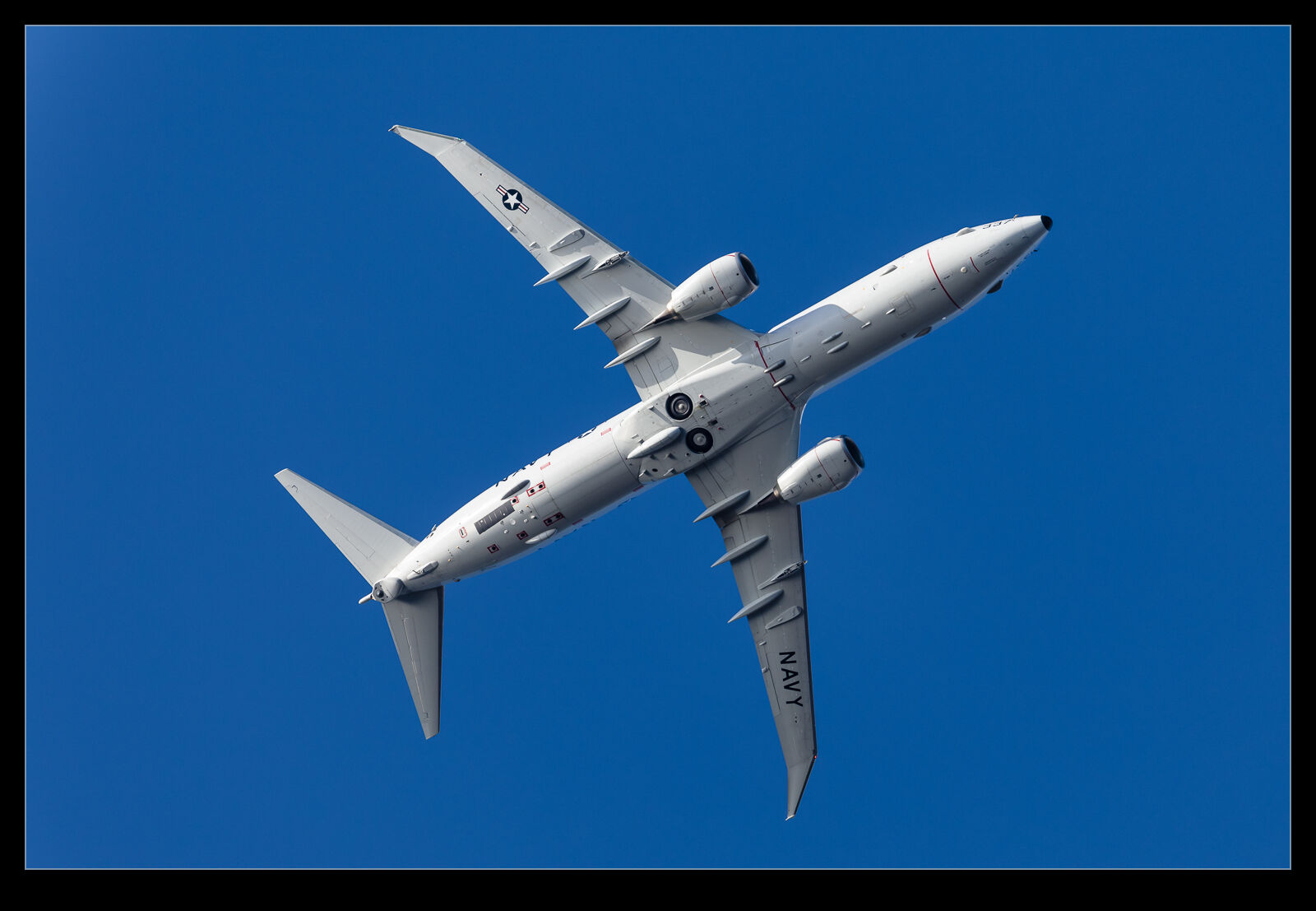 I was down at Fort Casey on Whidbey Island one sunny afternoon. I had been to Ault Field first thing in the morning and some of the shots from then will make it on here at some point. I was down near Coupeville awaiting some FCLP training but, since I had time on my hands, I was wandering down near the shore. The wind must have changed because some planes from Ault Field were coming down our way as part of their patterns. One was a P-8 – the latest that the Navy has for maritime patrol – while the other was a P-3 – the type that the P-8 has almost completely replaced in service. It seemed quite appropriate to have both of them working overhead at the same time.
I was down at Fort Casey on Whidbey Island one sunny afternoon. I had been to Ault Field first thing in the morning and some of the shots from then will make it on here at some point. I was down near Coupeville awaiting some FCLP training but, since I had time on my hands, I was wandering down near the shore. The wind must have changed because some planes from Ault Field were coming down our way as part of their patterns. One was a P-8 – the latest that the Navy has for maritime patrol – while the other was a P-3 – the type that the P-8 has almost completely replaced in service. It seemed quite appropriate to have both of them working overhead at the same time.
Skydive Snohomish’s Jump Ship
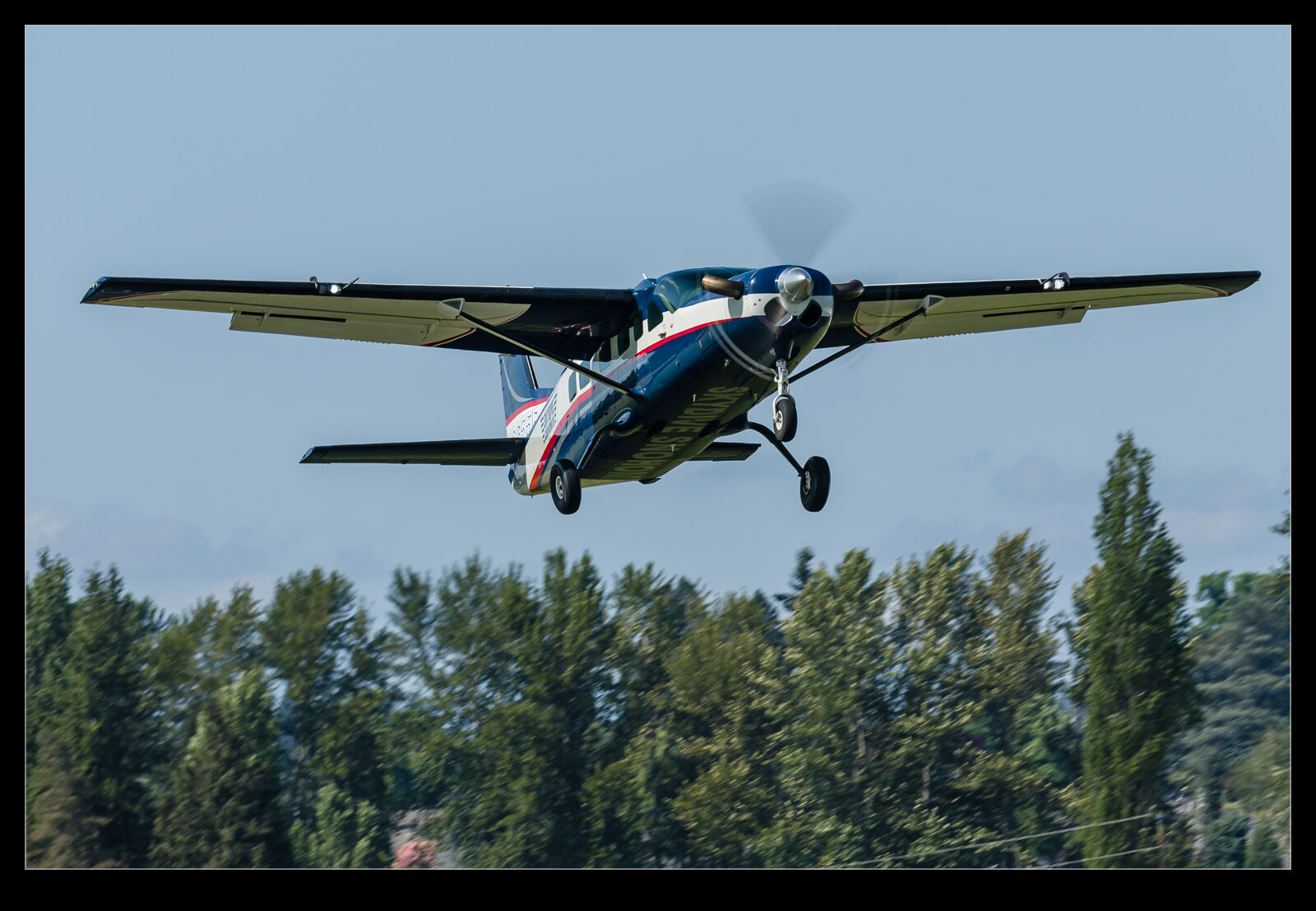 I was heading home from Arlington and passing Snohomish when it occurred to me that there might be an opportunity to shoot the Skydive Snohomish jump ship. They operate a Blackhawk conversion of the Cessna 208B Grand Caravan. The conversion adds a more powerful engine which is useful for a jump ship that is focused on getting loads to altitude fast and then returning to do it all again. I turned off to the airport and saw that operations where on a southerly flow which means towards the road.
I was heading home from Arlington and passing Snohomish when it occurred to me that there might be an opportunity to shoot the Skydive Snohomish jump ship. They operate a Blackhawk conversion of the Cessna 208B Grand Caravan. The conversion adds a more powerful engine which is useful for a jump ship that is focused on getting loads to altitude fast and then returning to do it all again. I turned off to the airport and saw that operations where on a southerly flow which means towards the road.
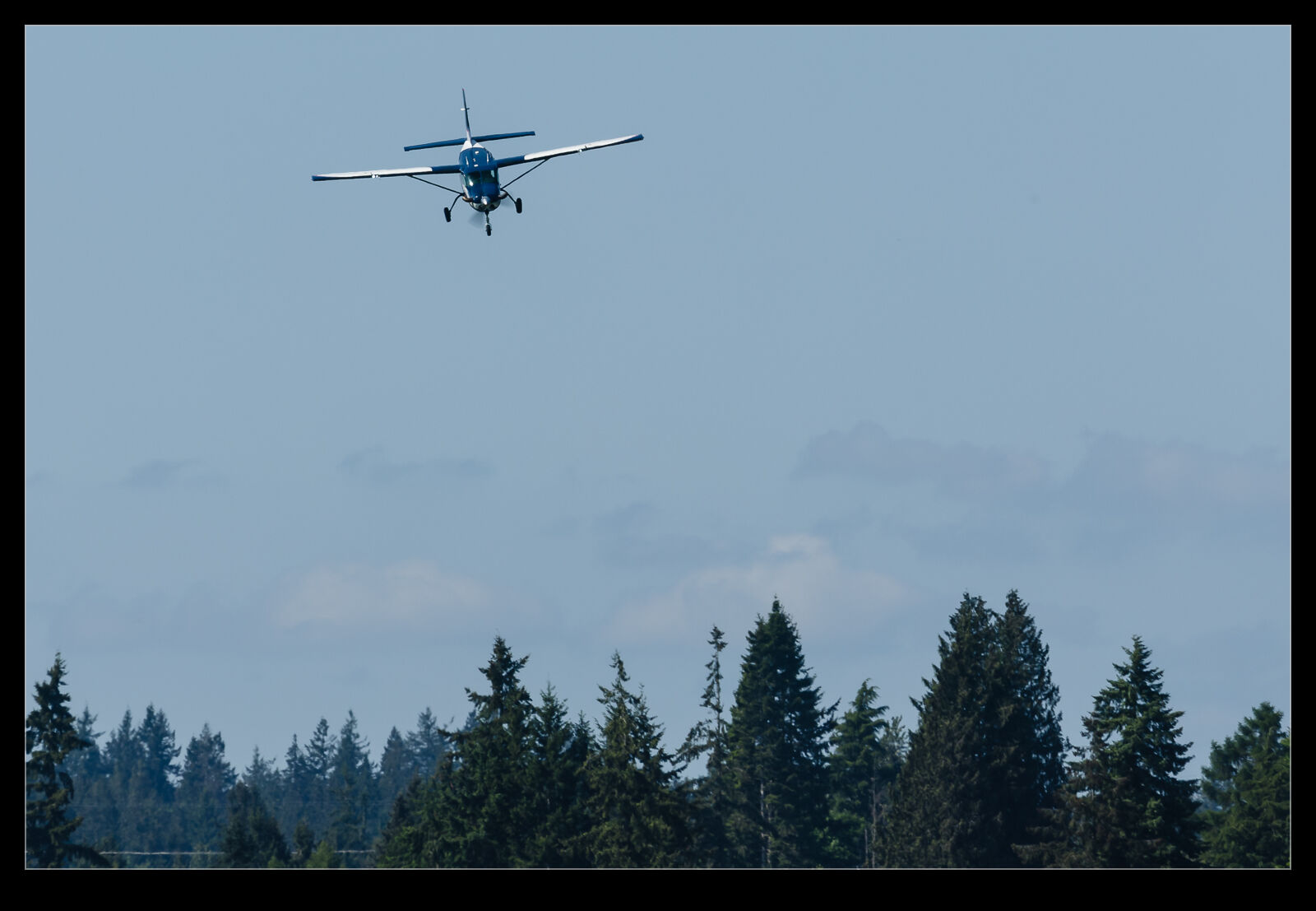 As I drove around, the plane took off directly over me, but I had no time to stop and get a shop. I parked up and watched it climbing above me and then disgorging its load of what my friend Bob calls meat bombs. The descent was pretty rapid, and the plane was landing as the jumpers were making their approaches. It pulled off the runway and then held on a taxiway for a while. It appeared that they waited until the next lift was ready to board at which point, they pulled up to the skydive facility and got everyone on board.
As I drove around, the plane took off directly over me, but I had no time to stop and get a shop. I parked up and watched it climbing above me and then disgorging its load of what my friend Bob calls meat bombs. The descent was pretty rapid, and the plane was landing as the jumpers were making their approaches. It pulled off the runway and then held on a taxiway for a while. It appeared that they waited until the next lift was ready to board at which point, they pulled up to the skydive facility and got everyone on board.
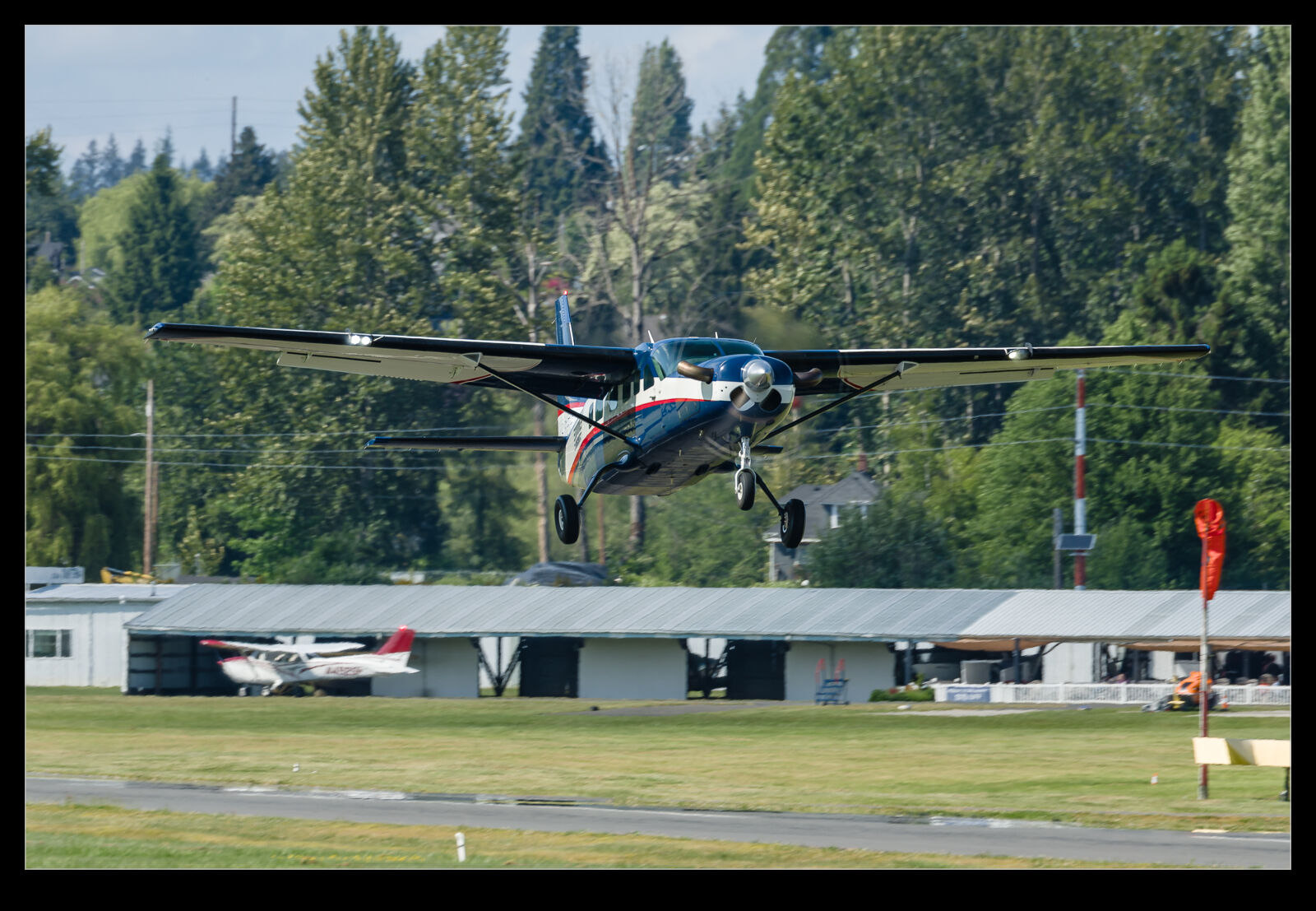 It was a short taxi to the hold point and then they were lined up and powering towards me. It is a short runway at Harvey Field, but they were rapidly airborne and climbing above me and on their way to the drop point. Once they were gone, I packed up my stuff and headed home.
It was a short taxi to the hold point and then they were lined up and powering towards me. It is a short runway at Harvey Field, but they were rapidly airborne and climbing above me and on their way to the drop point. Once they were gone, I packed up my stuff and headed home.
End of the Road for RAF Hercules Ops
It is a feature of getting old that so many things that seem recent really aren’t. The introduction of the C-130J to service took place in the late 1990s. One of the earliest operators was the Royal Air Force. That means that their aircraft are coming up on 25 years old. That is not that old for a Hercules but they have been used pretty intensively. Combine that with the cost of supporting multiple transport fleets and it might not be so surprising that they are now being retired.
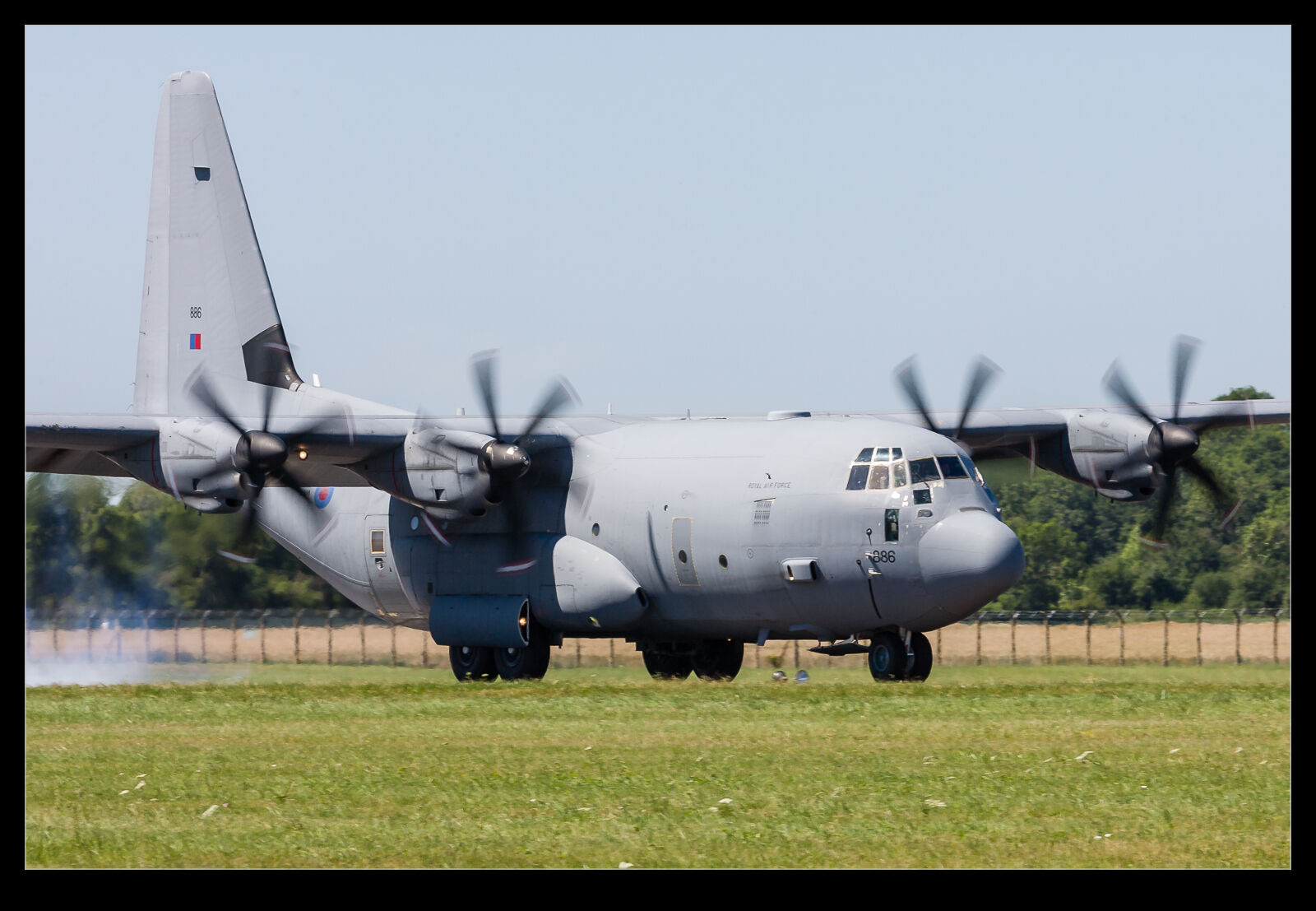 I figured I would roll through my collection of shots to see how often I had photographed the RAF J models. The answer is not that often. The fact that I left the UK not long after they came in to service is part of the reason. I have seen them at various locations though so I am not without shots. It is funny to hear the stories now about whether the A400M is ready to take on the role and whether the Hercs should be retained.
I figured I would roll through my collection of shots to see how often I had photographed the RAF J models. The answer is not that often. The fact that I left the UK not long after they came in to service is part of the reason. I have seen them at various locations though so I am not without shots. It is funny to hear the stories now about whether the A400M is ready to take on the role and whether the Hercs should be retained.
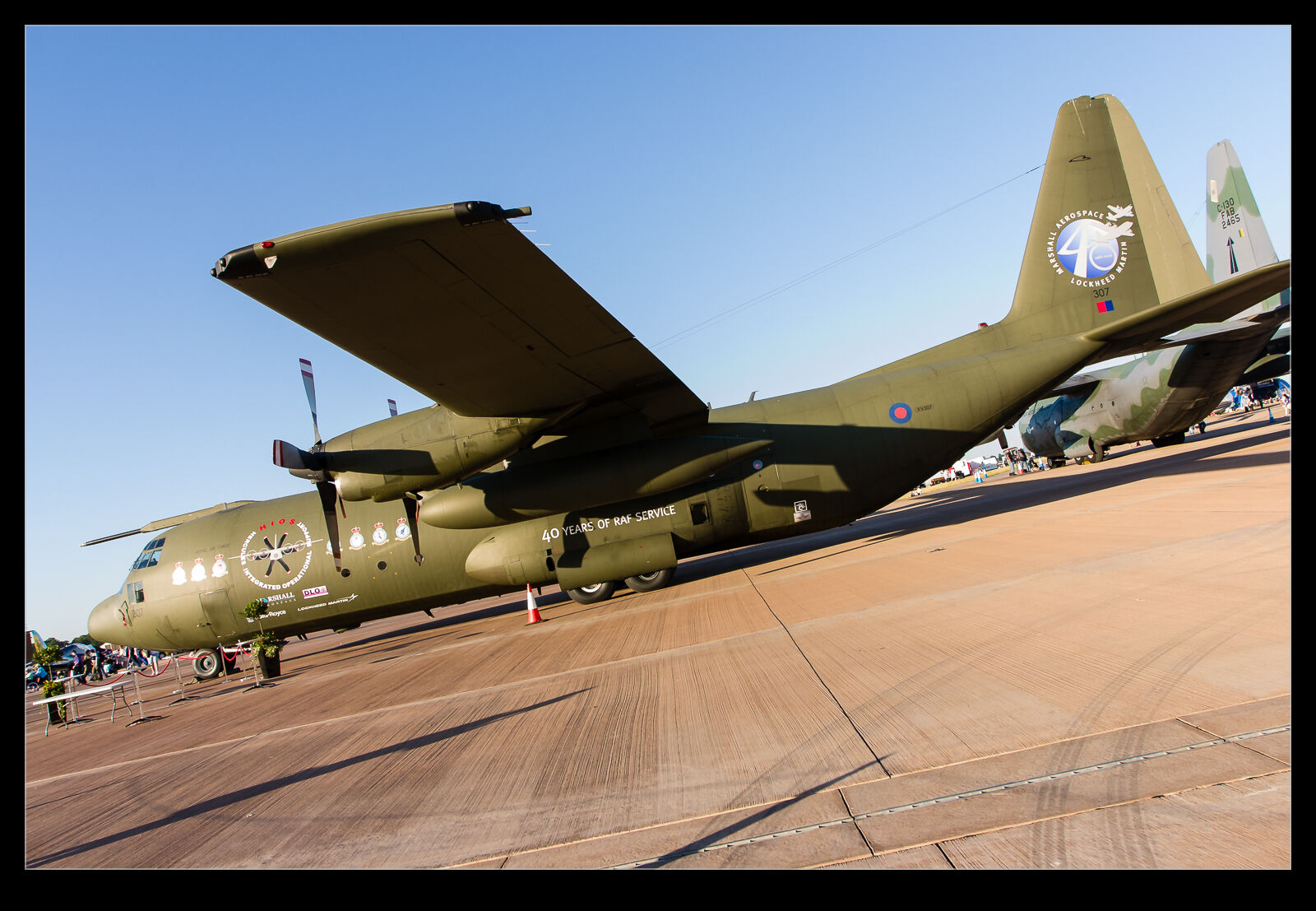 When the Js came along, there were loads of stories of how they couldn’t do the things that the old K models could. Of course, they gradually ironed out the bugs and became a solid workhorse. The same will probably happen for the A400M and in a couple of decades, someone will be complaining that whatever replaces them is unsuited to the task and that they should be retained. Such is life…
When the Js came along, there were loads of stories of how they couldn’t do the things that the old K models could. Of course, they gradually ironed out the bugs and became a solid workhorse. The same will probably happen for the A400M and in a couple of decades, someone will be complaining that whatever replaces them is unsuited to the task and that they should be retained. Such is life…
Floatplanes Since I’m In Vancouver Anyway!
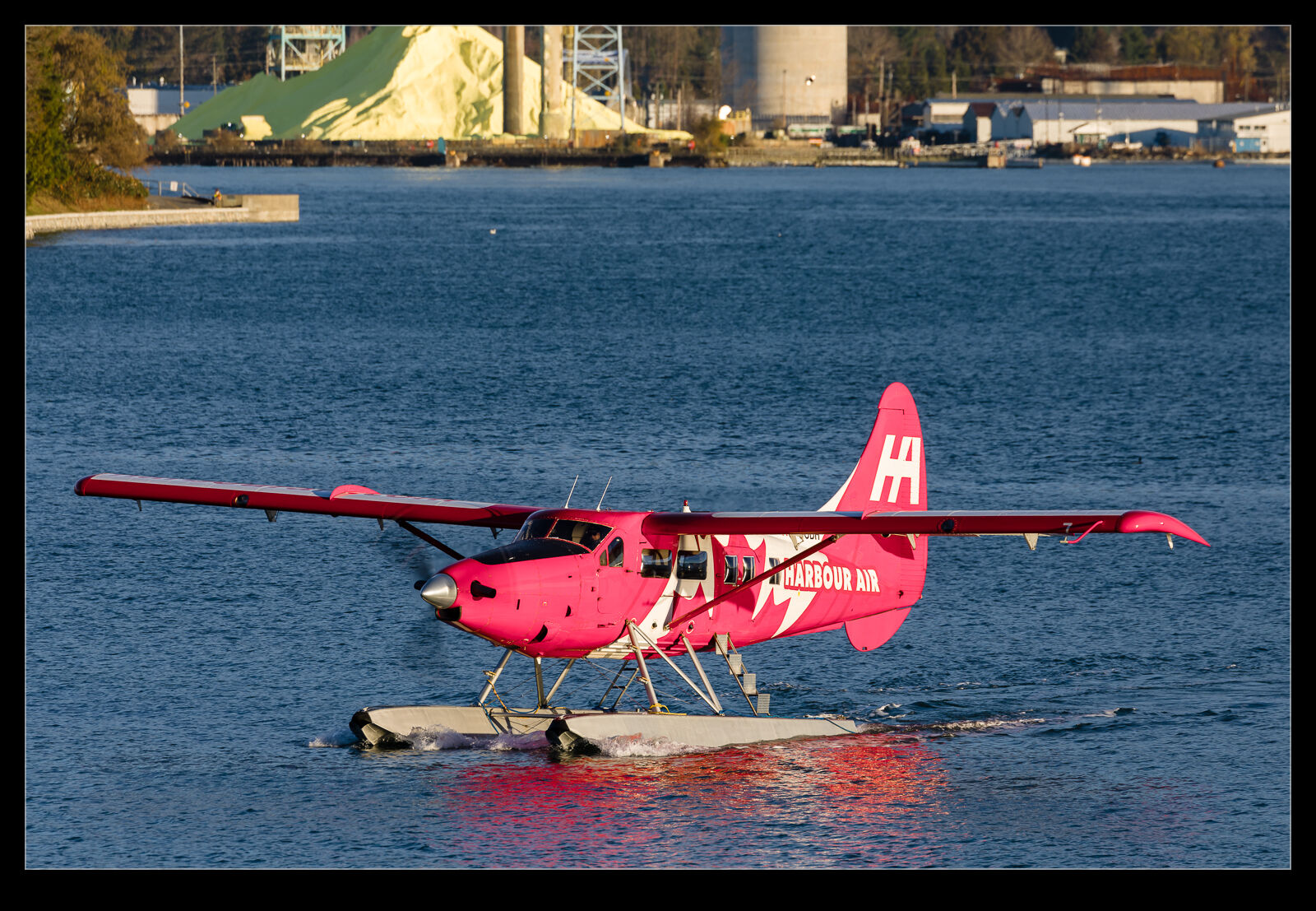 Our November visit to Vancouver was about us doing some fun stuff with friends and enjoying what a great city has to offer. However, when staying so close to the waterfront, it was improbable that I wouldn’t spend a little time watching the floatplane operations. Even non-enthusiasts find the floatplanes enjoyable to watch so I am not standing out too much here. The weather wasn’t ideal and the early evenings meant flying would be curtailed before it got too dark but I was happy to get a little bit of flying to watch as part of my weekend away!
Our November visit to Vancouver was about us doing some fun stuff with friends and enjoying what a great city has to offer. However, when staying so close to the waterfront, it was improbable that I wouldn’t spend a little time watching the floatplane operations. Even non-enthusiasts find the floatplanes enjoyable to watch so I am not standing out too much here. The weather wasn’t ideal and the early evenings meant flying would be curtailed before it got too dark but I was happy to get a little bit of flying to watch as part of my weekend away!
